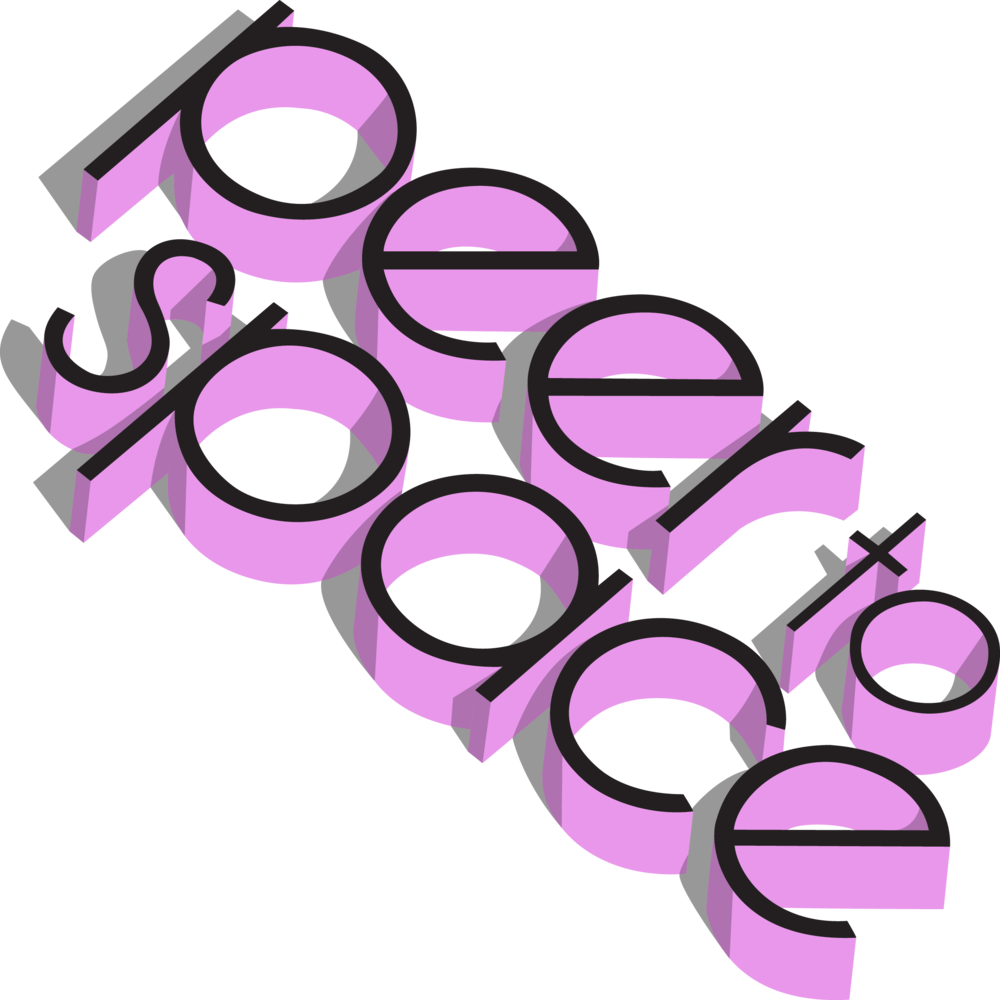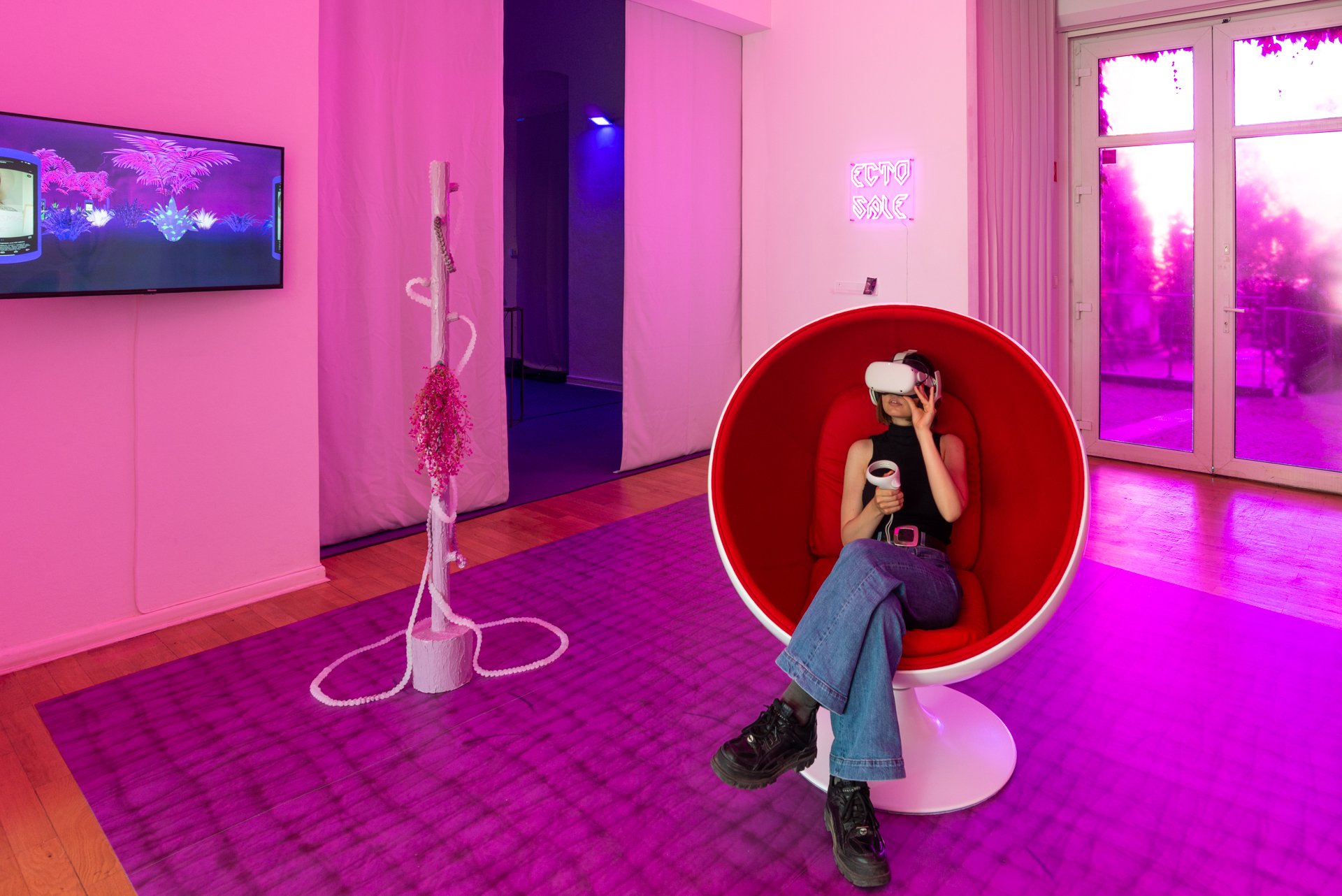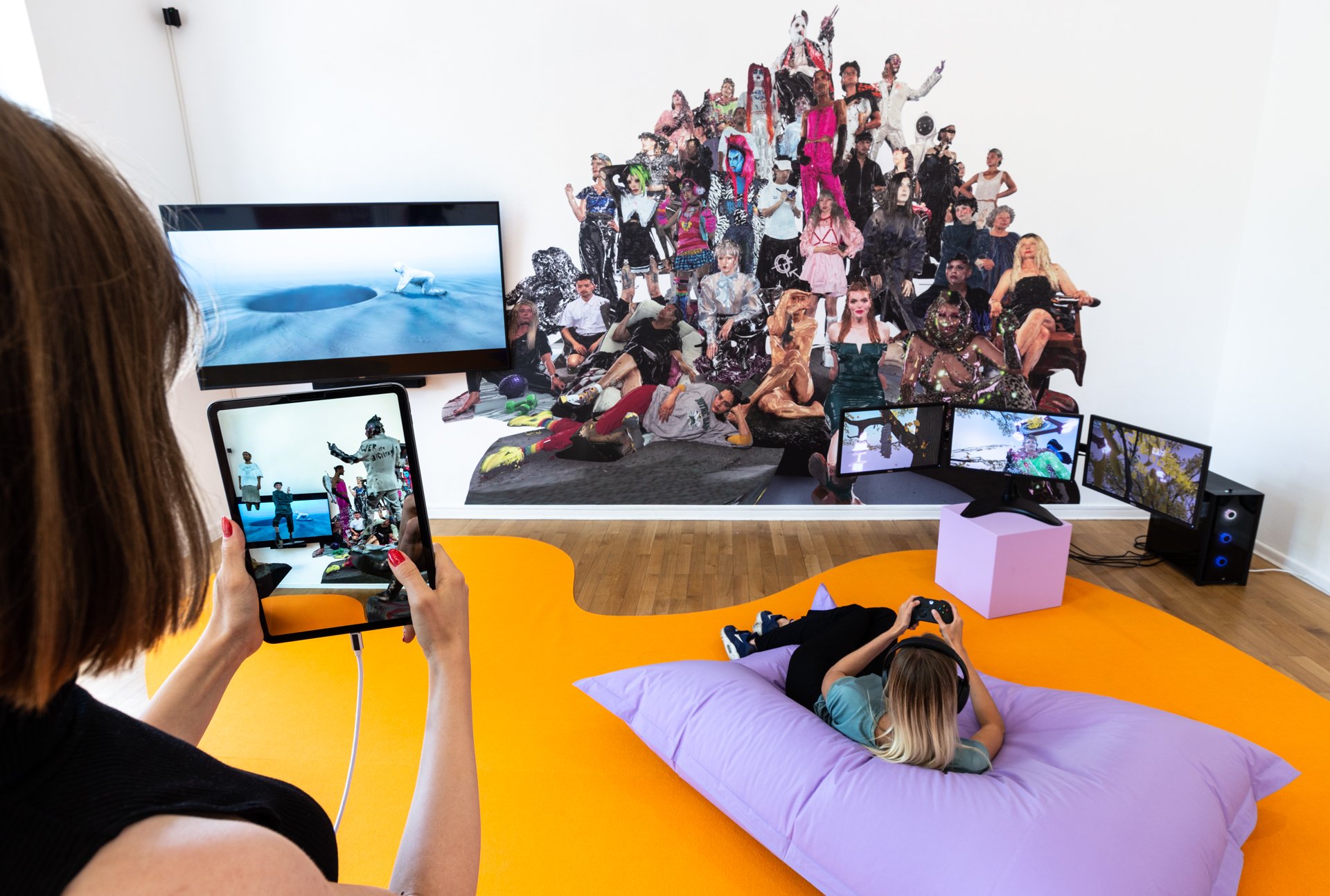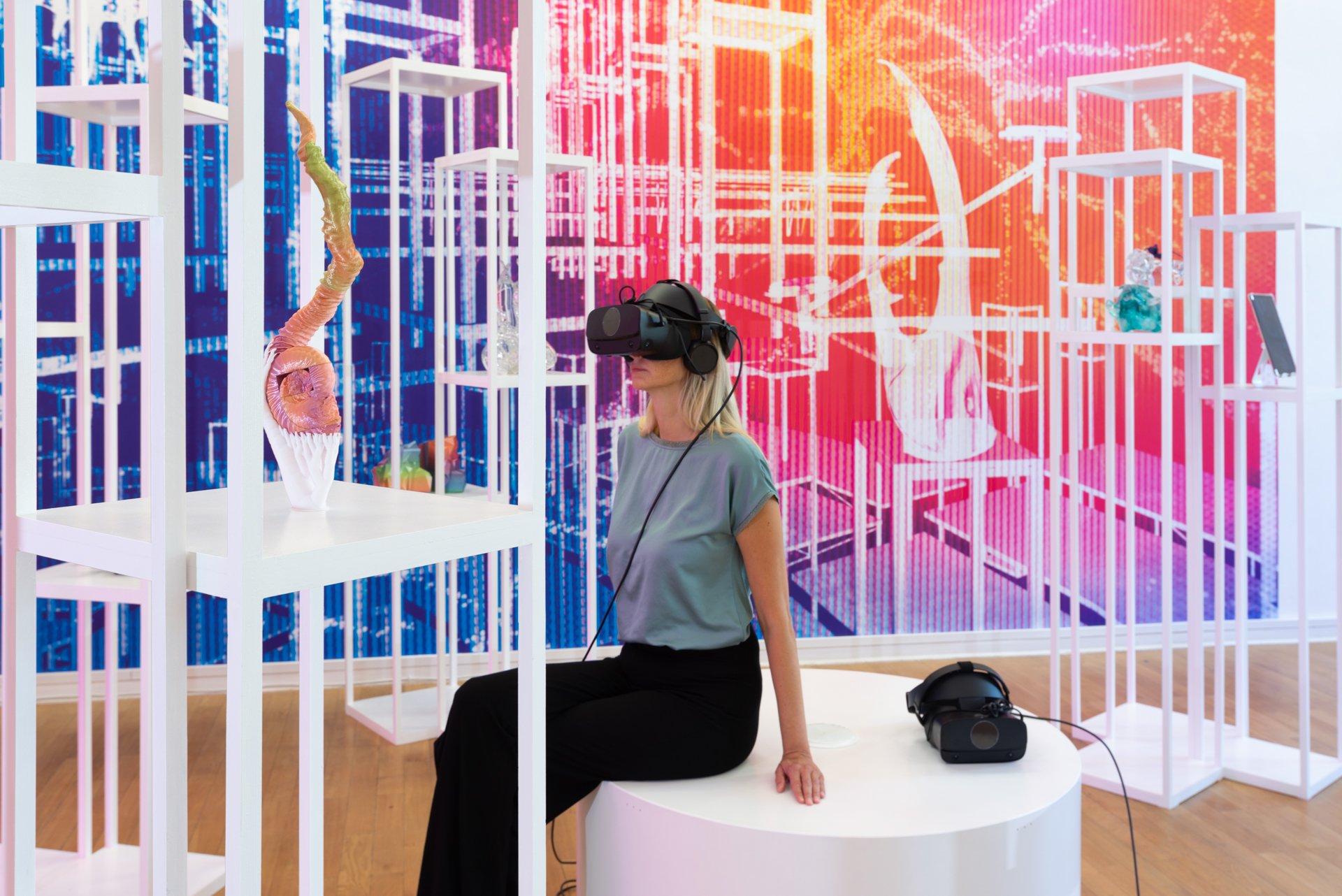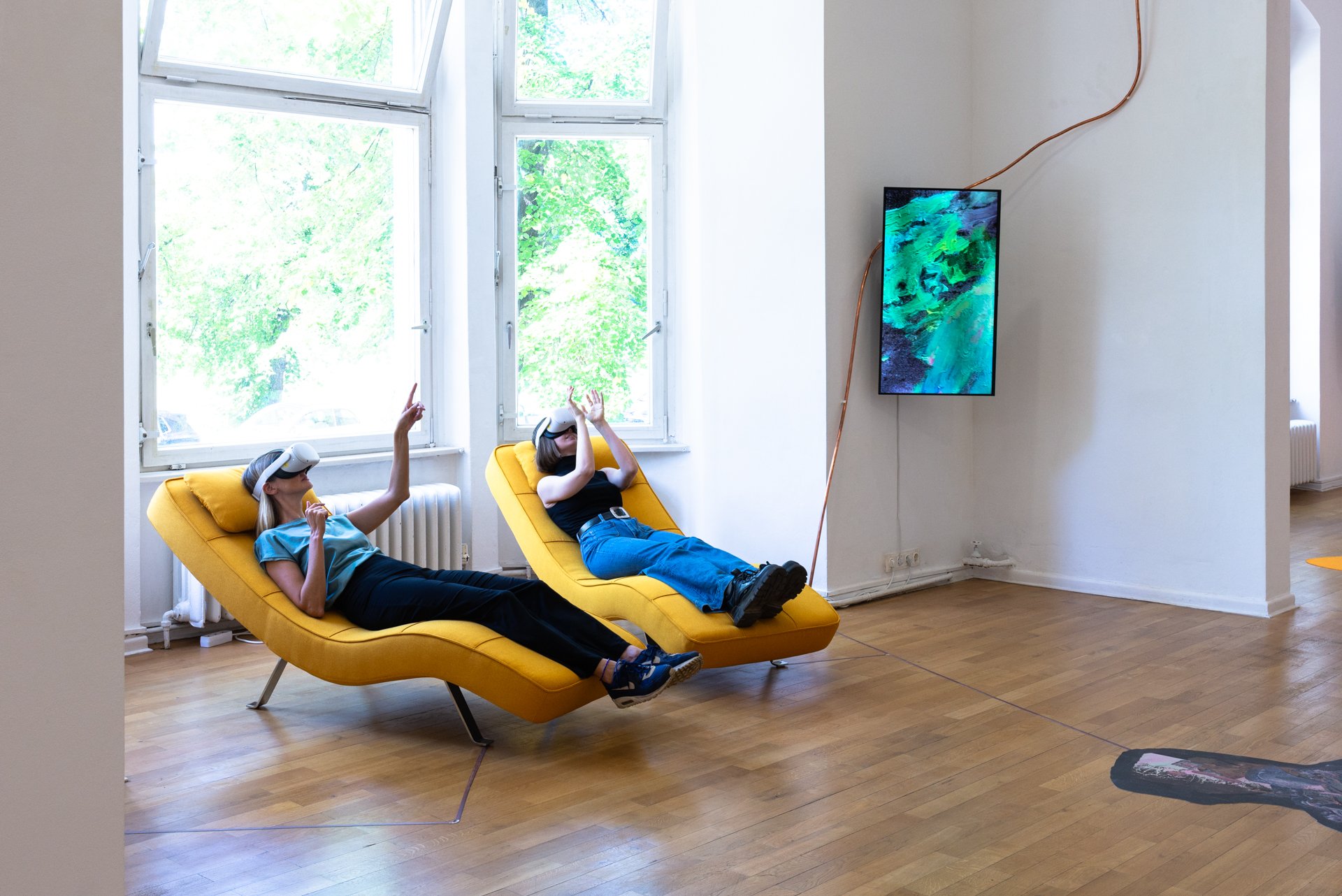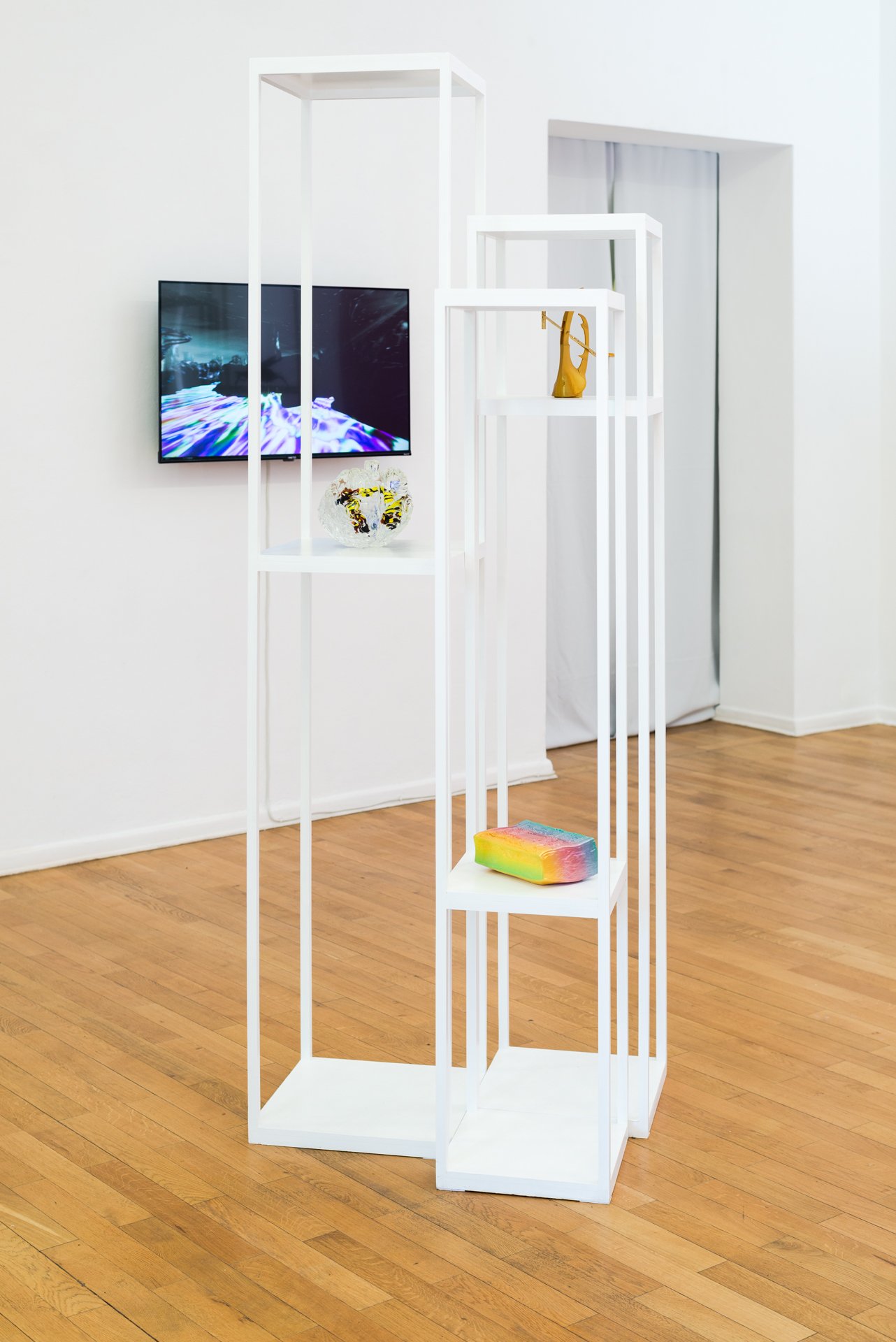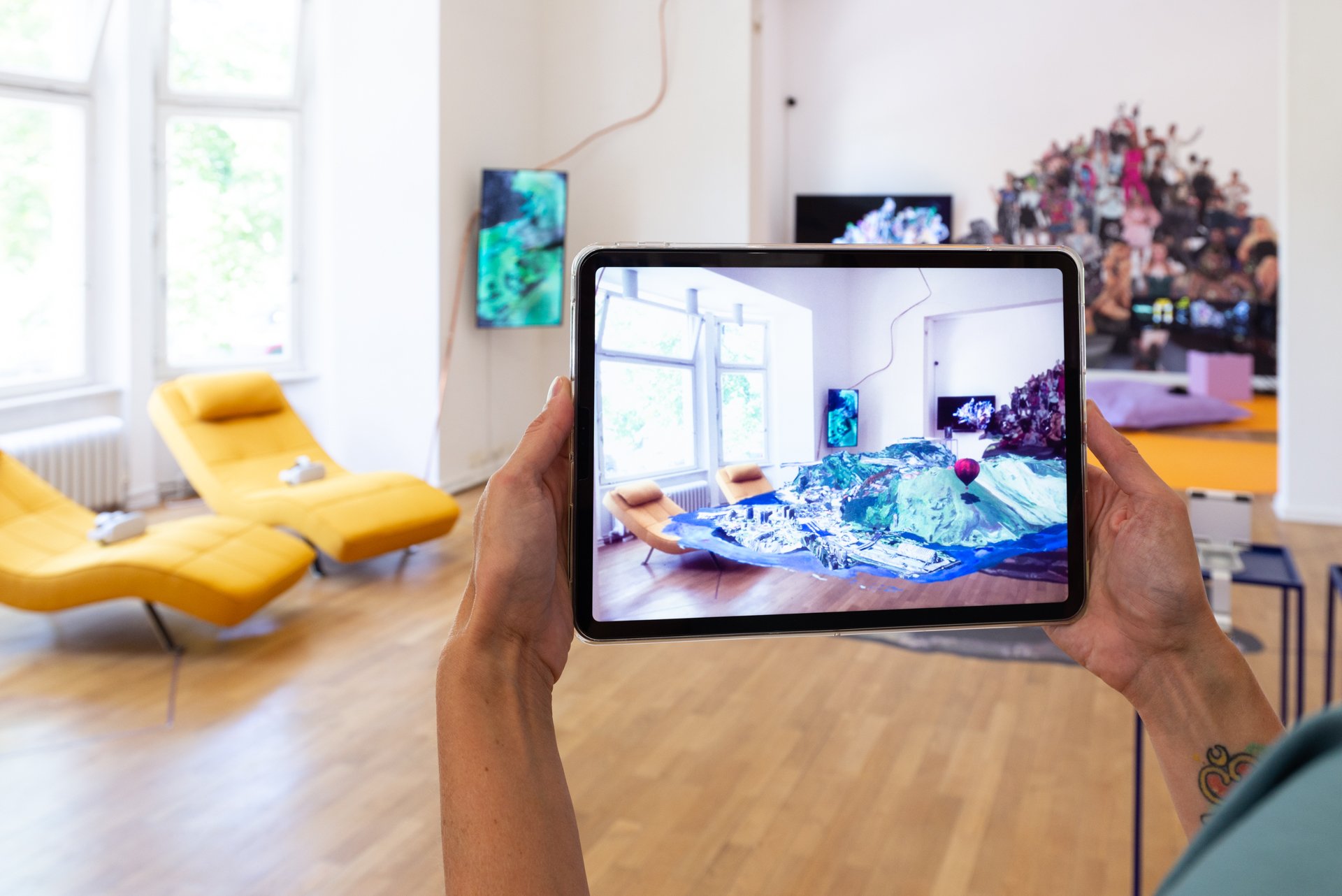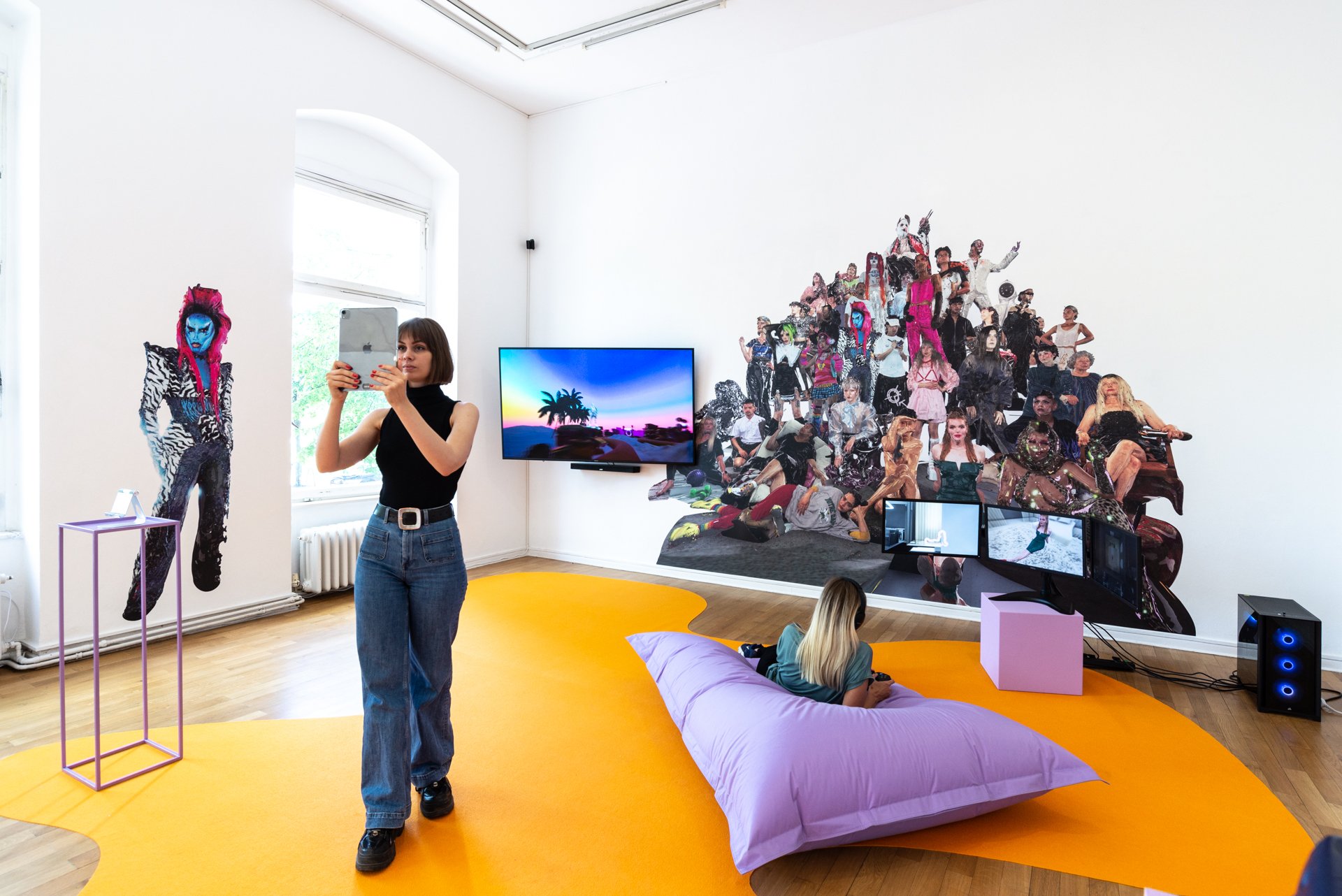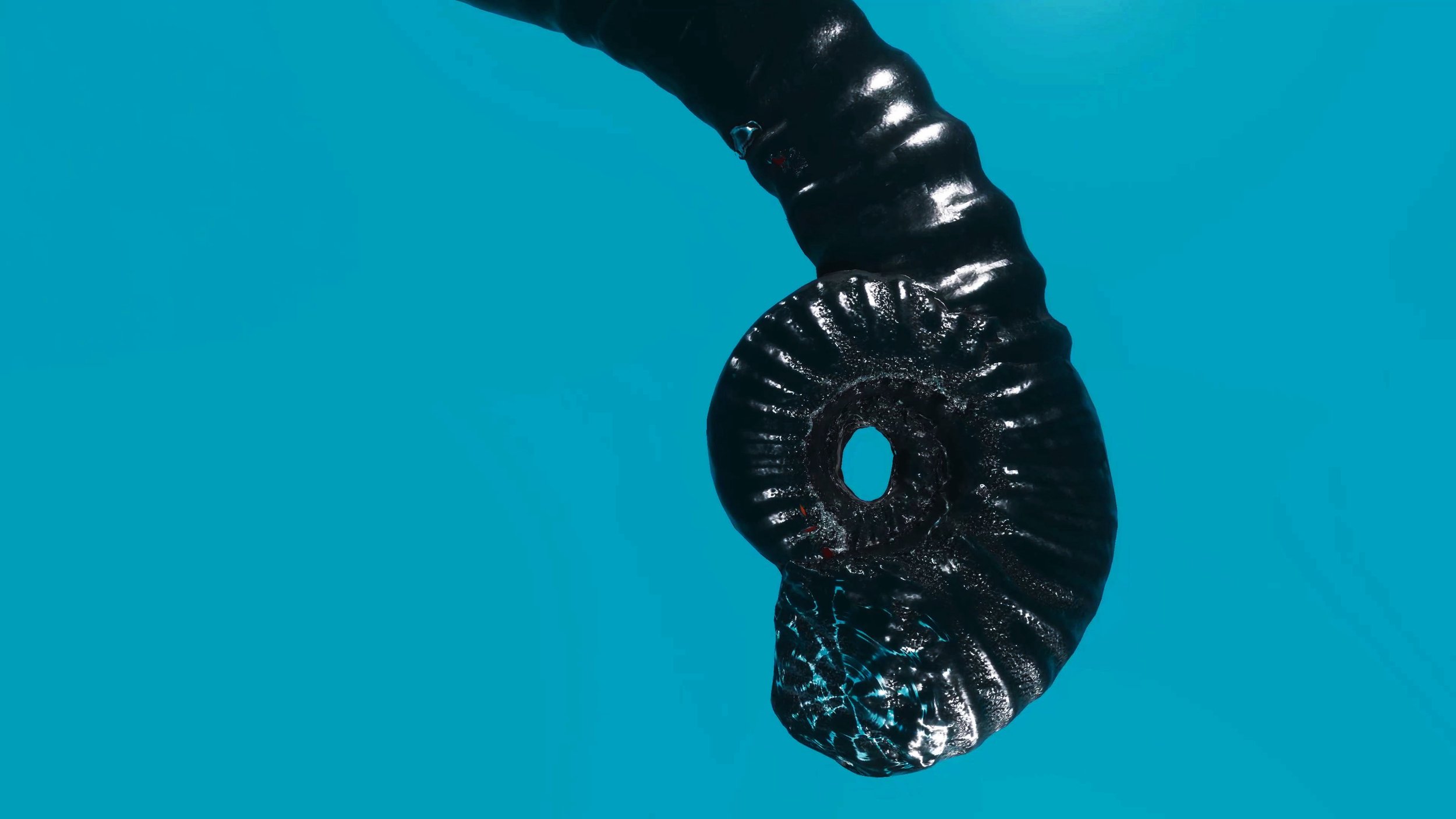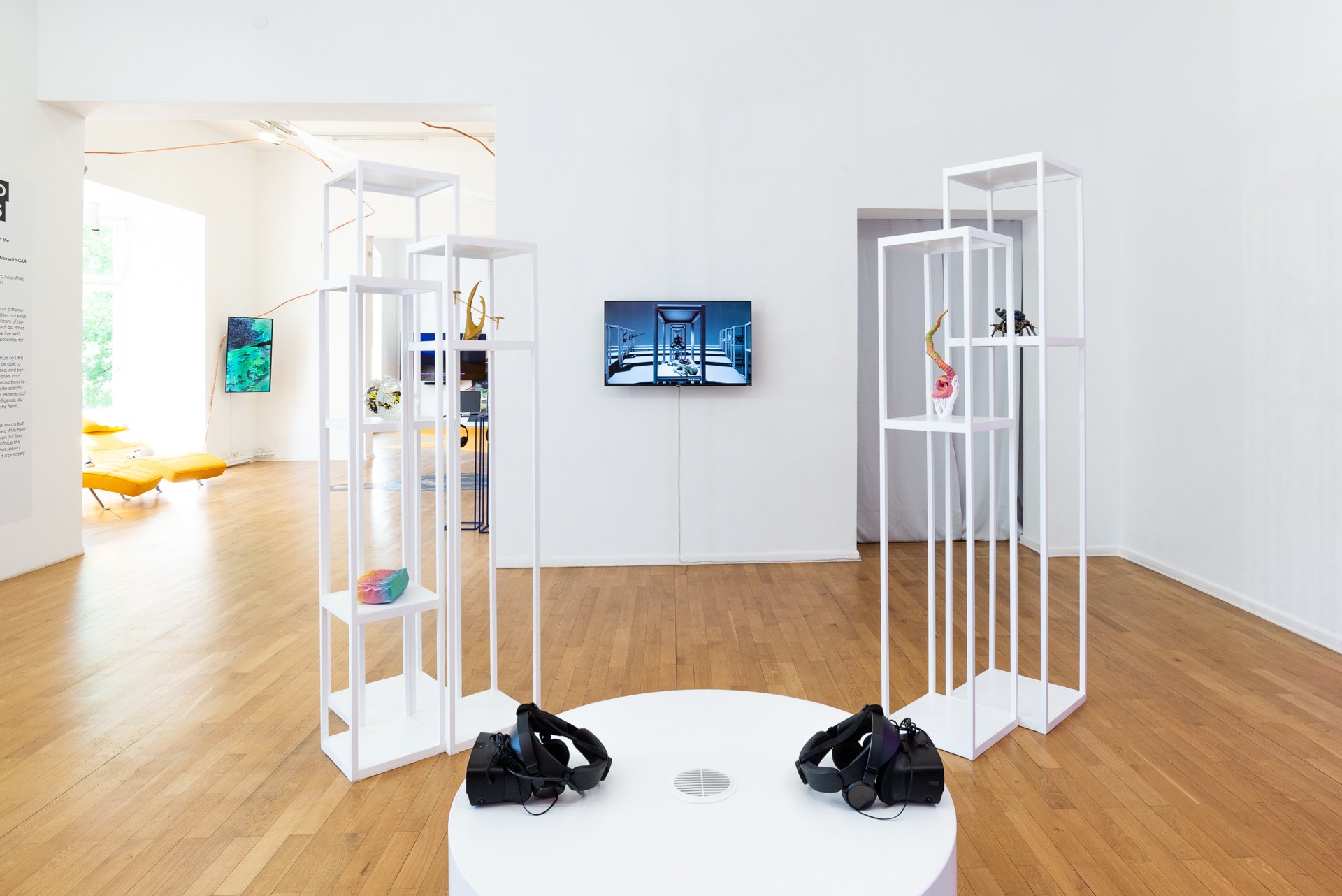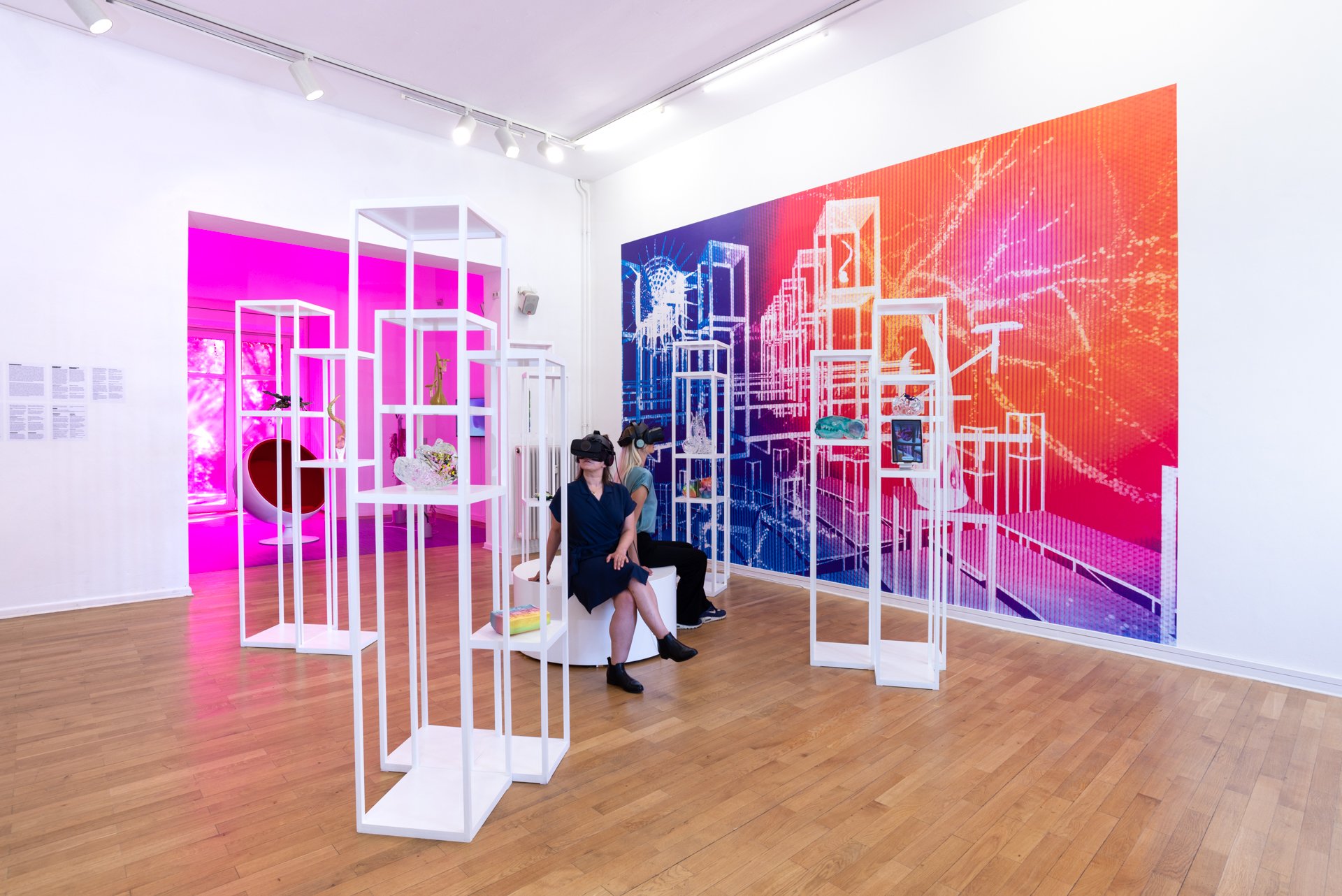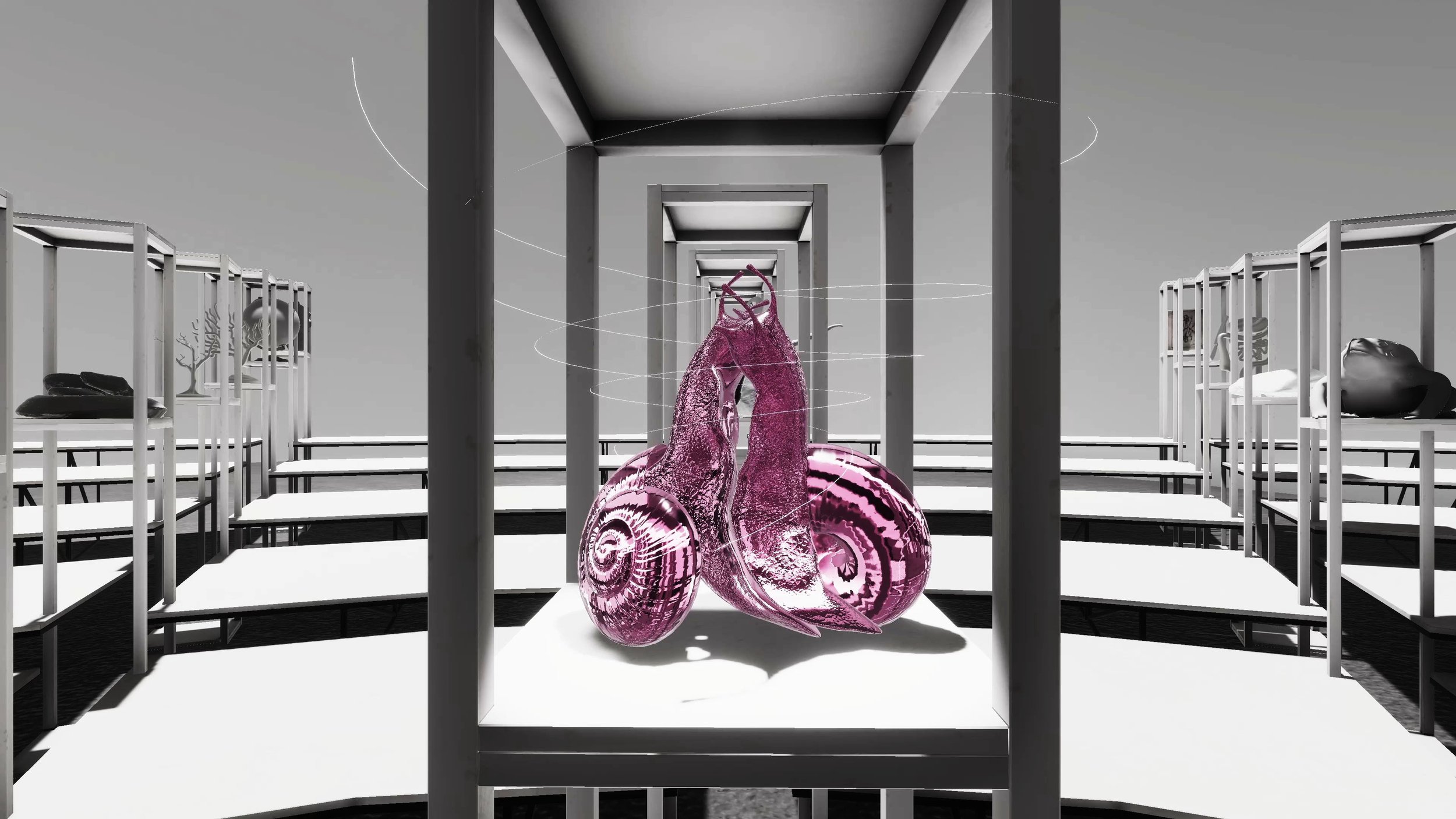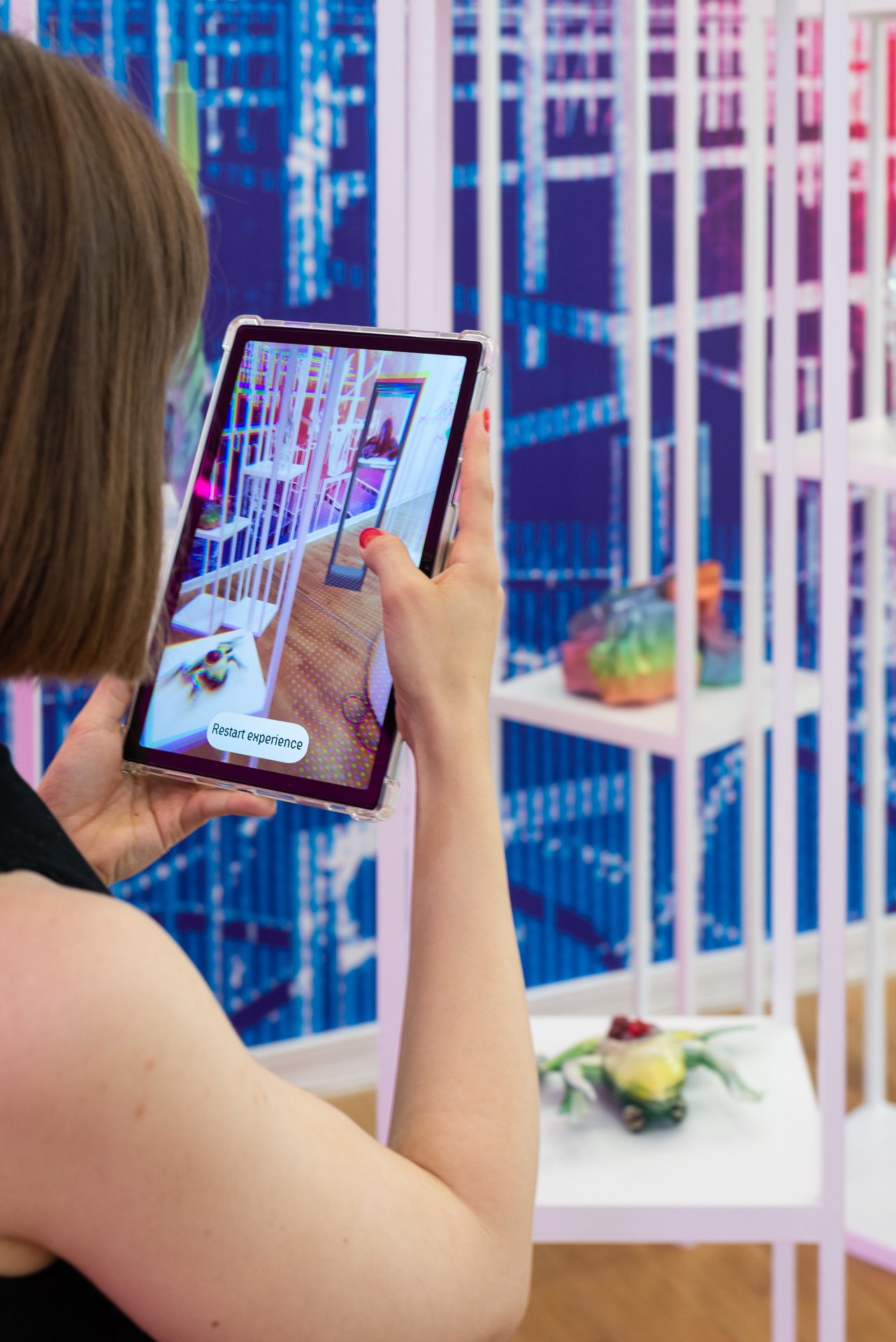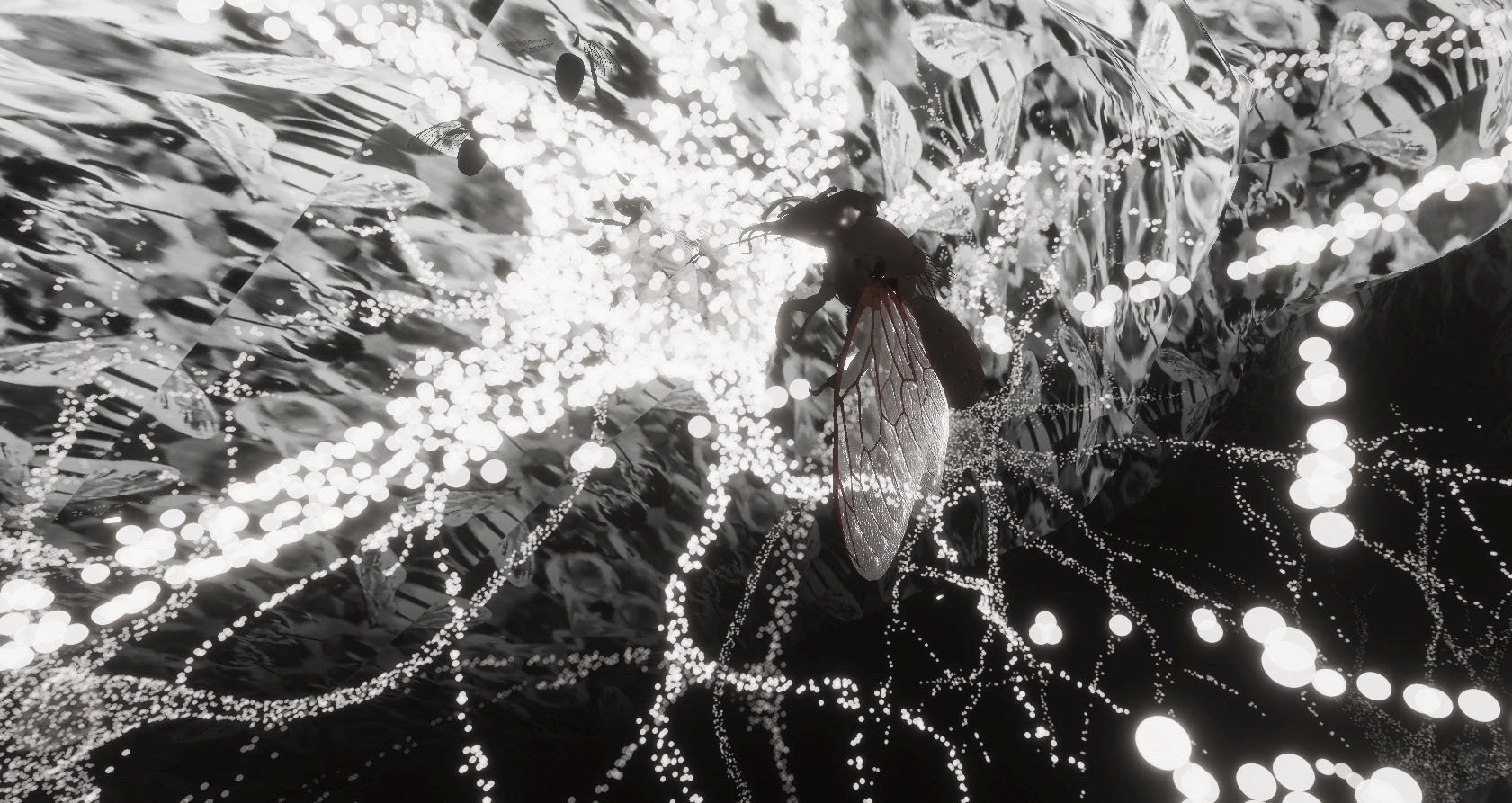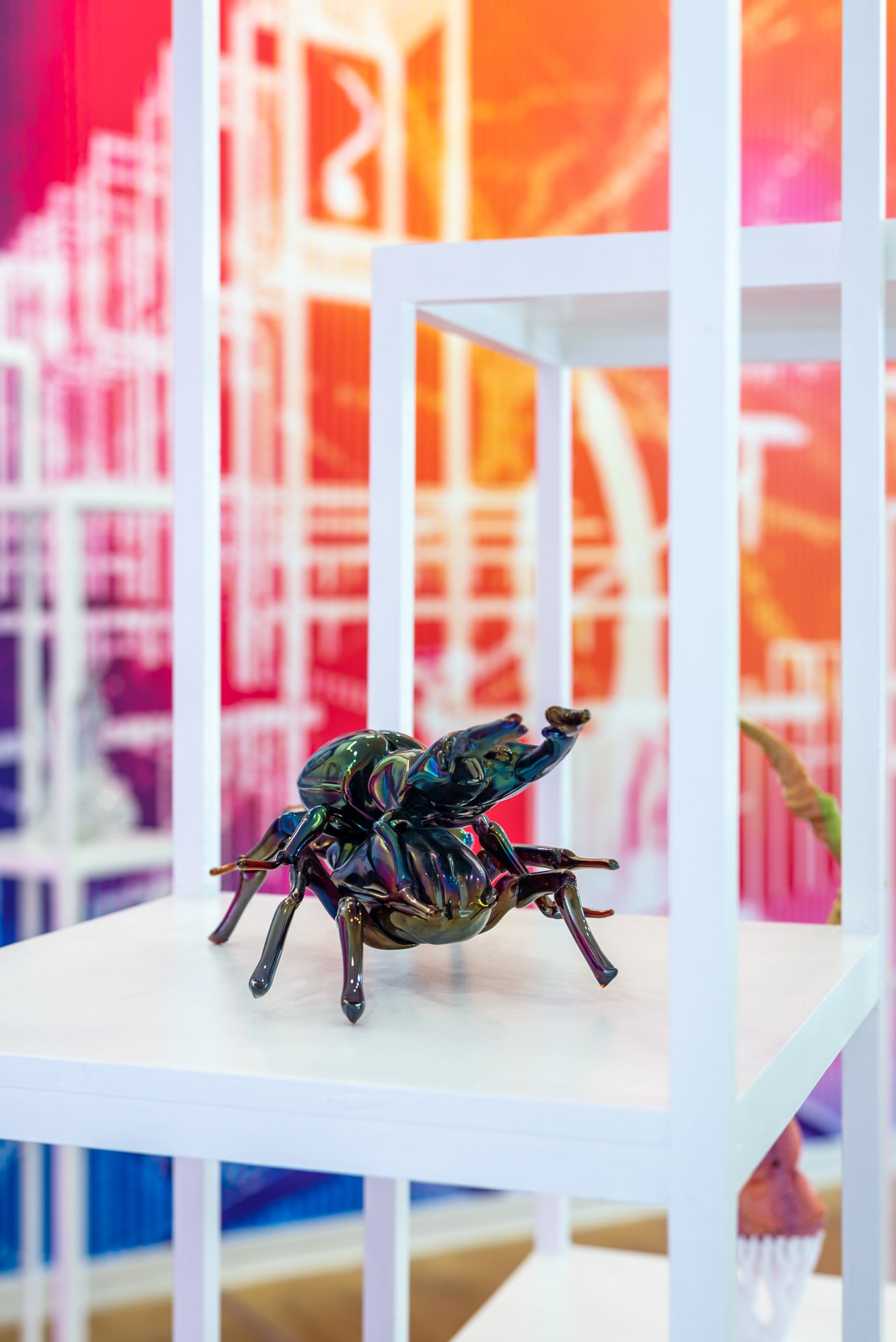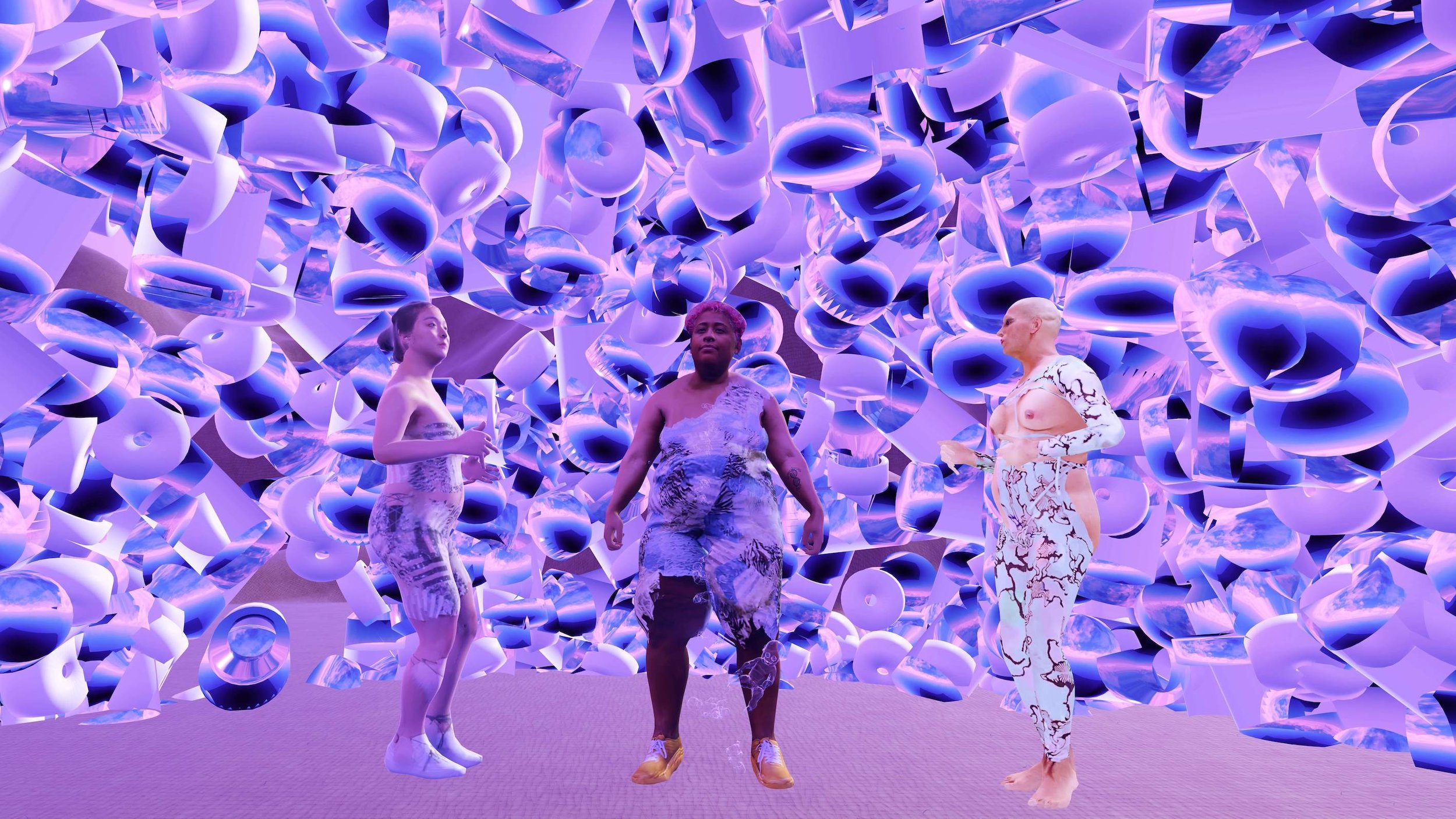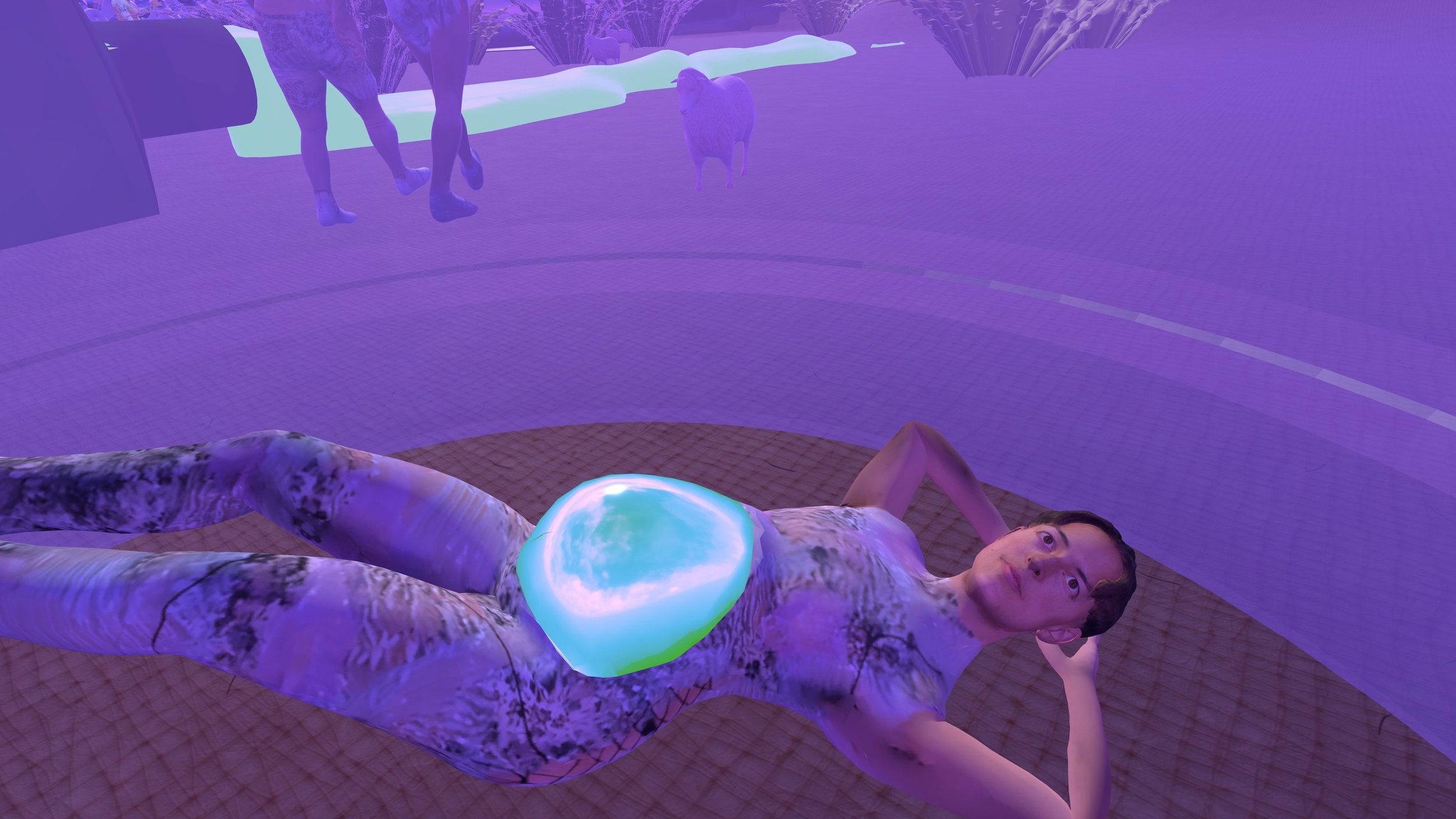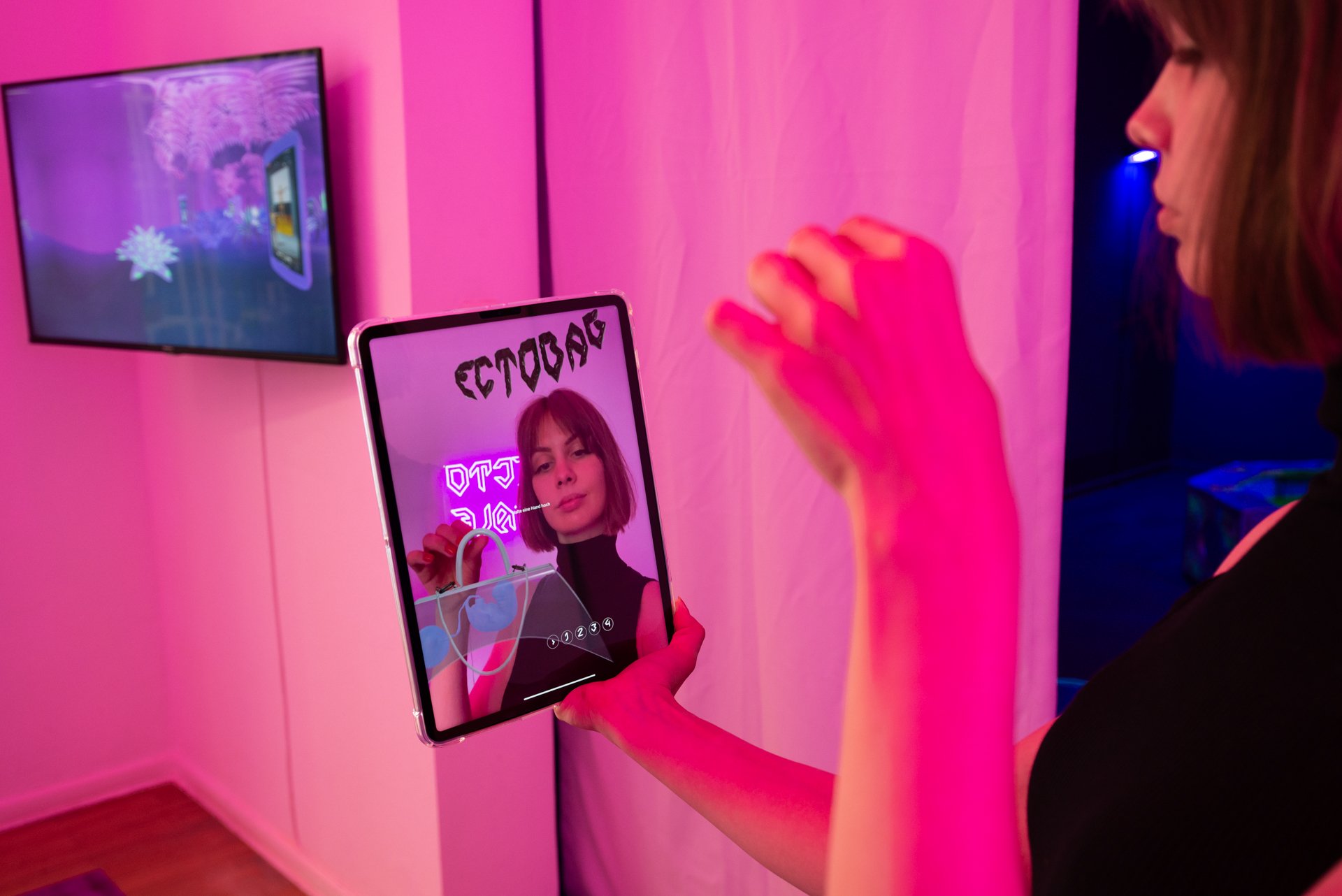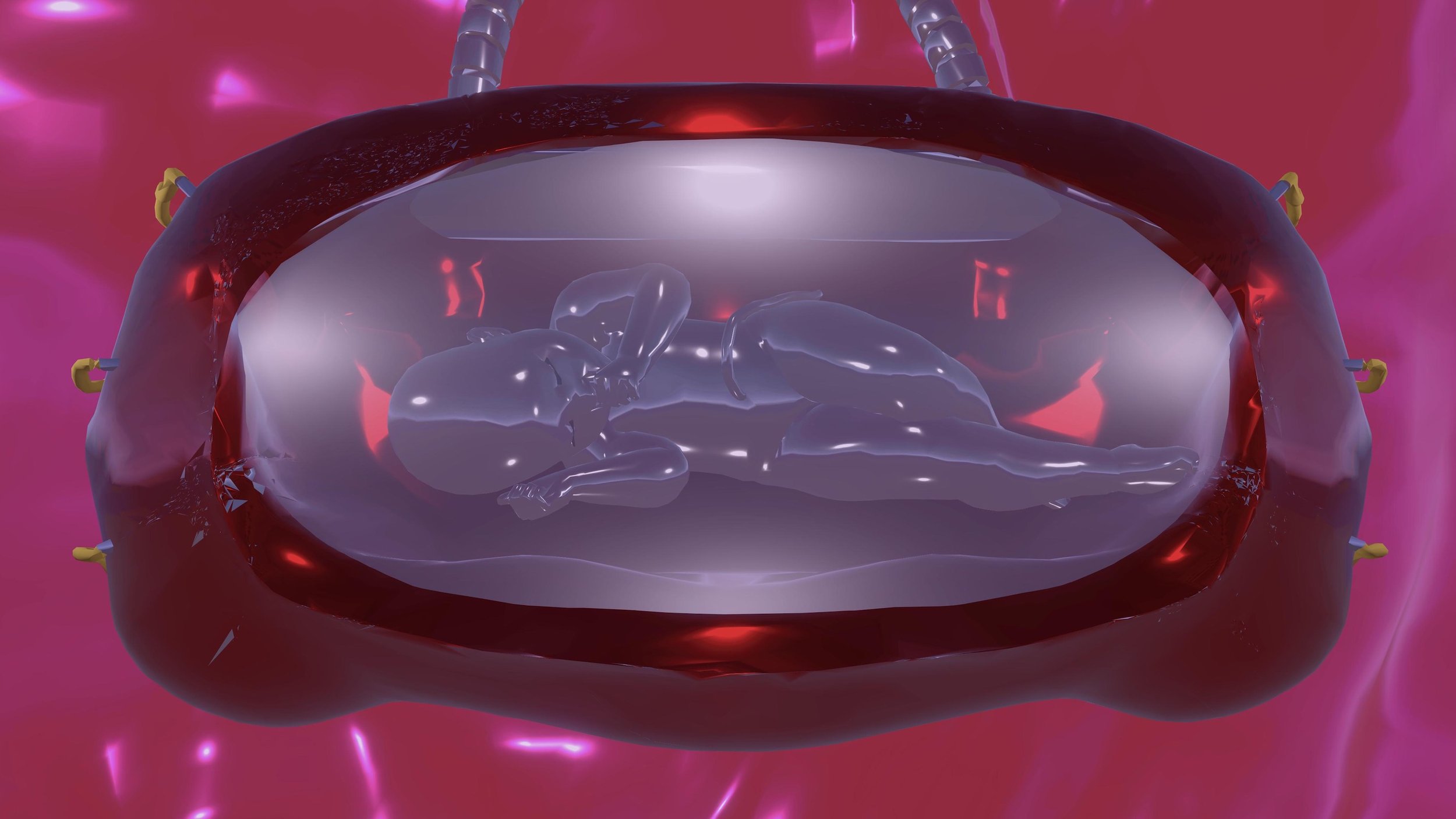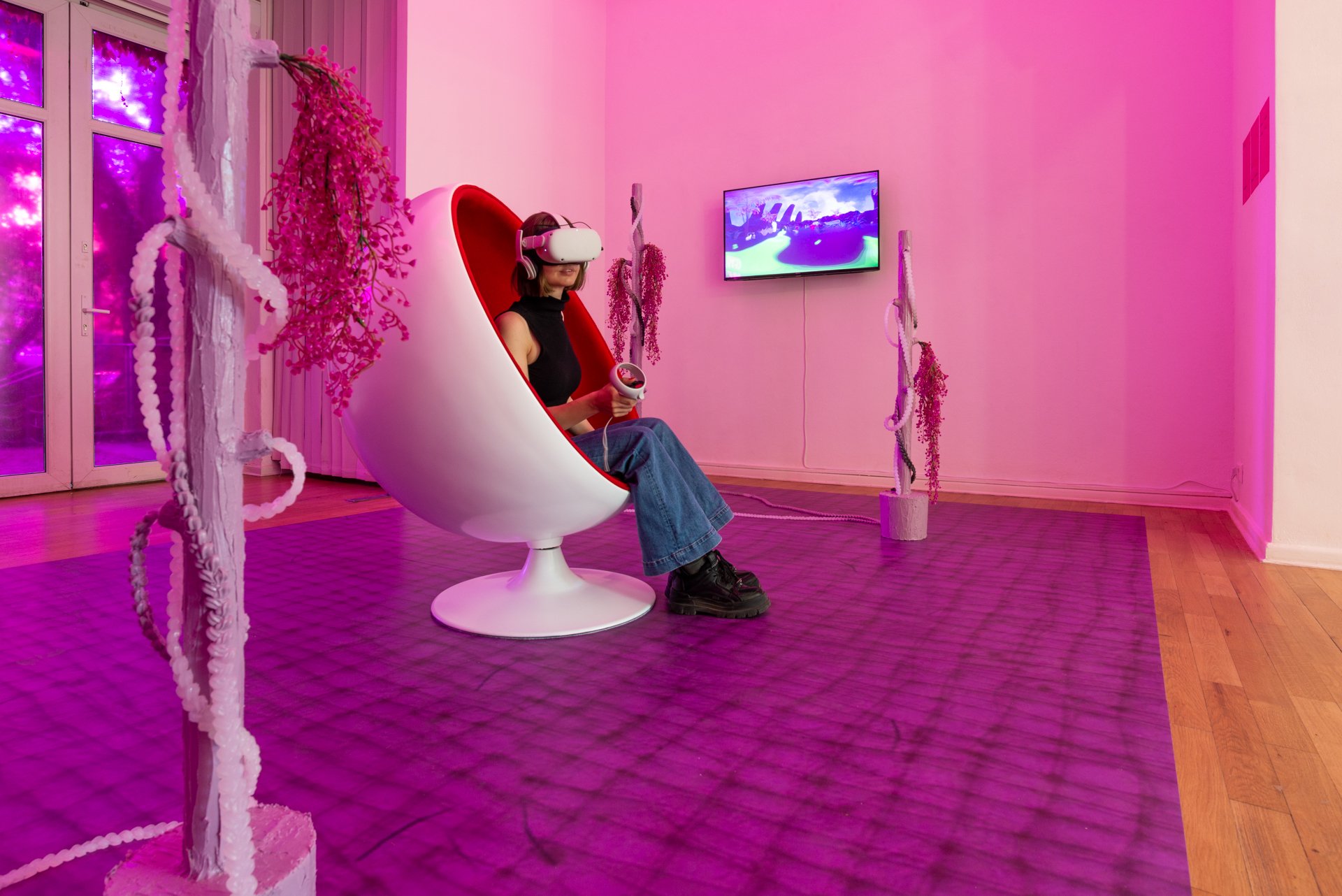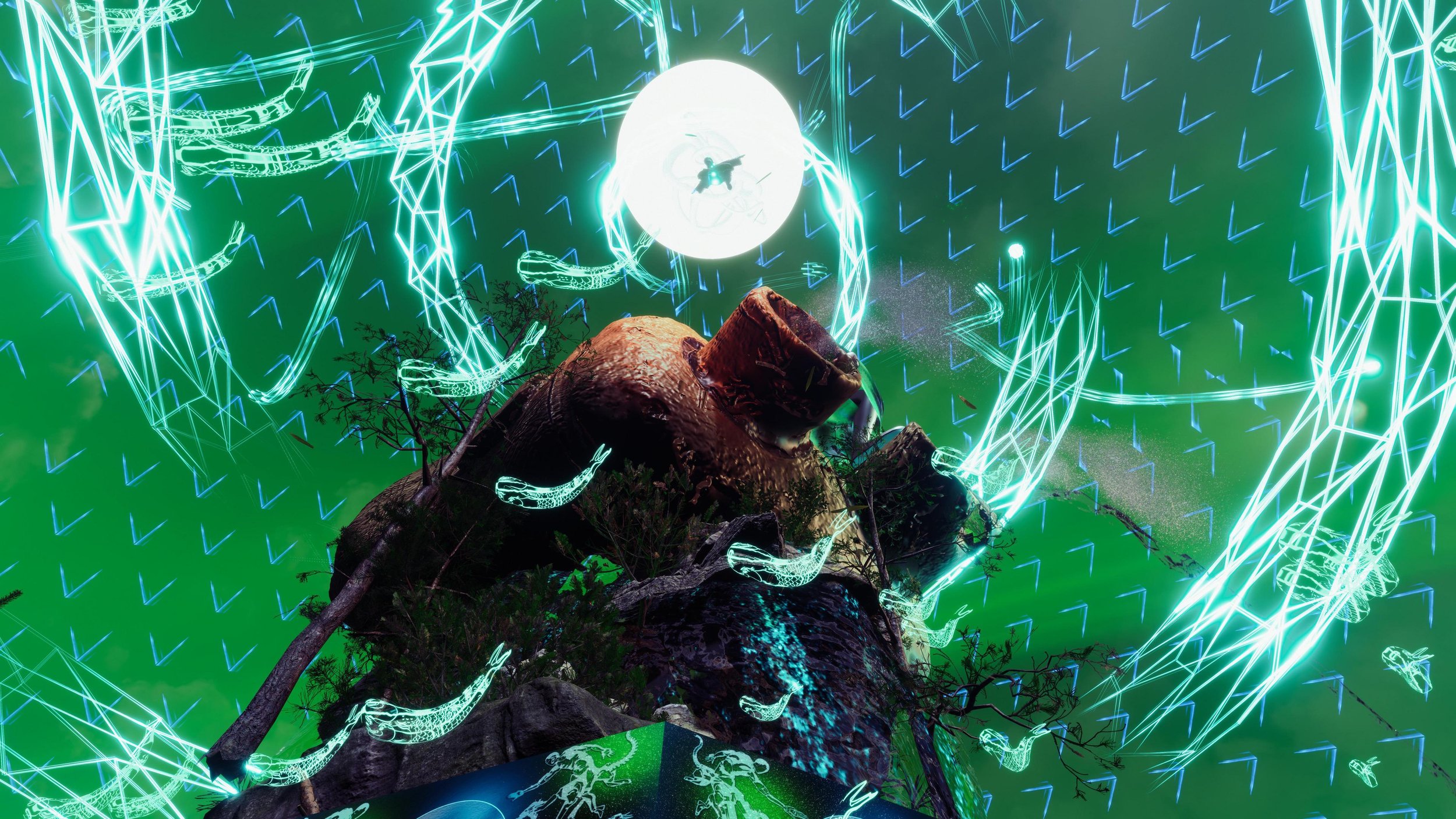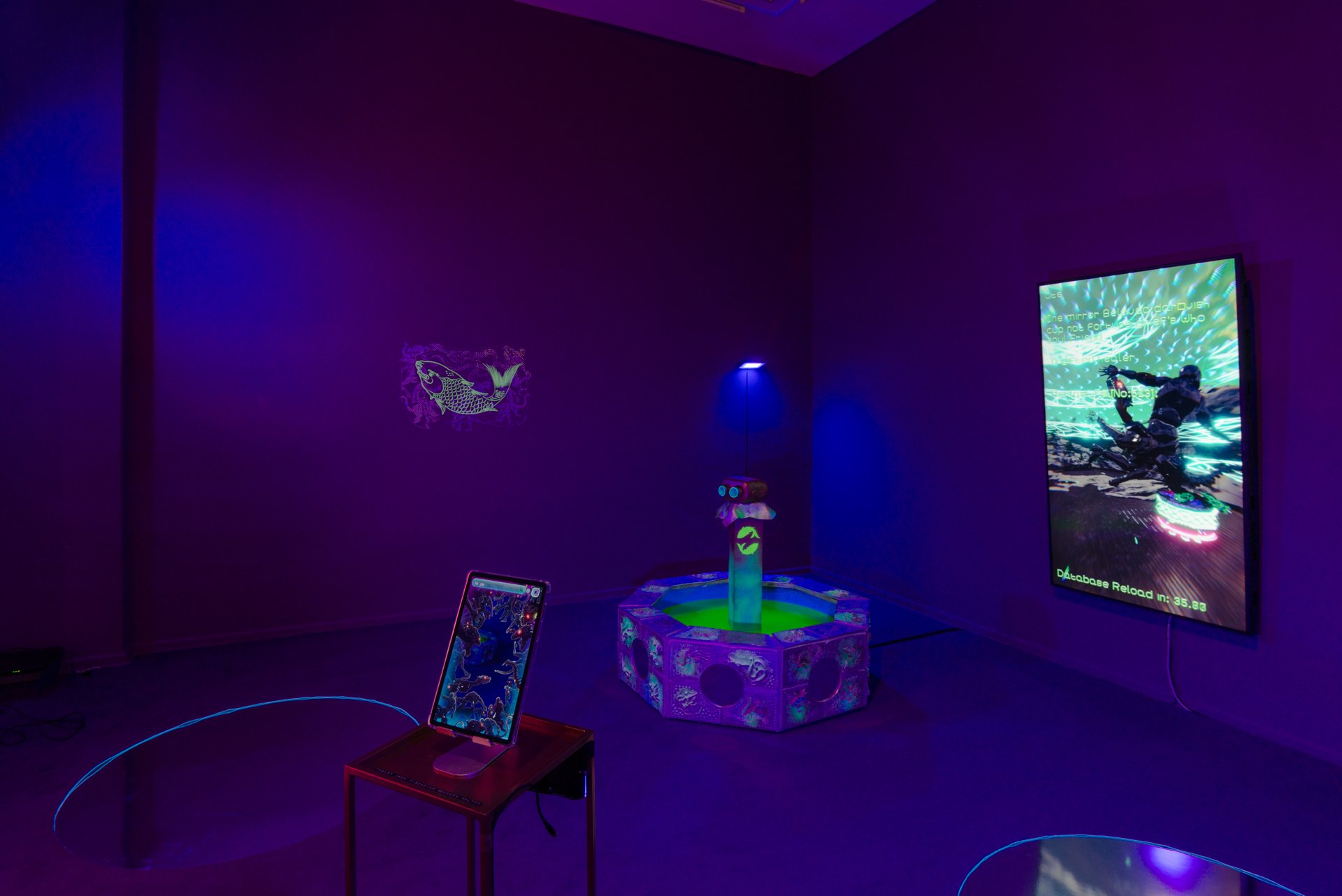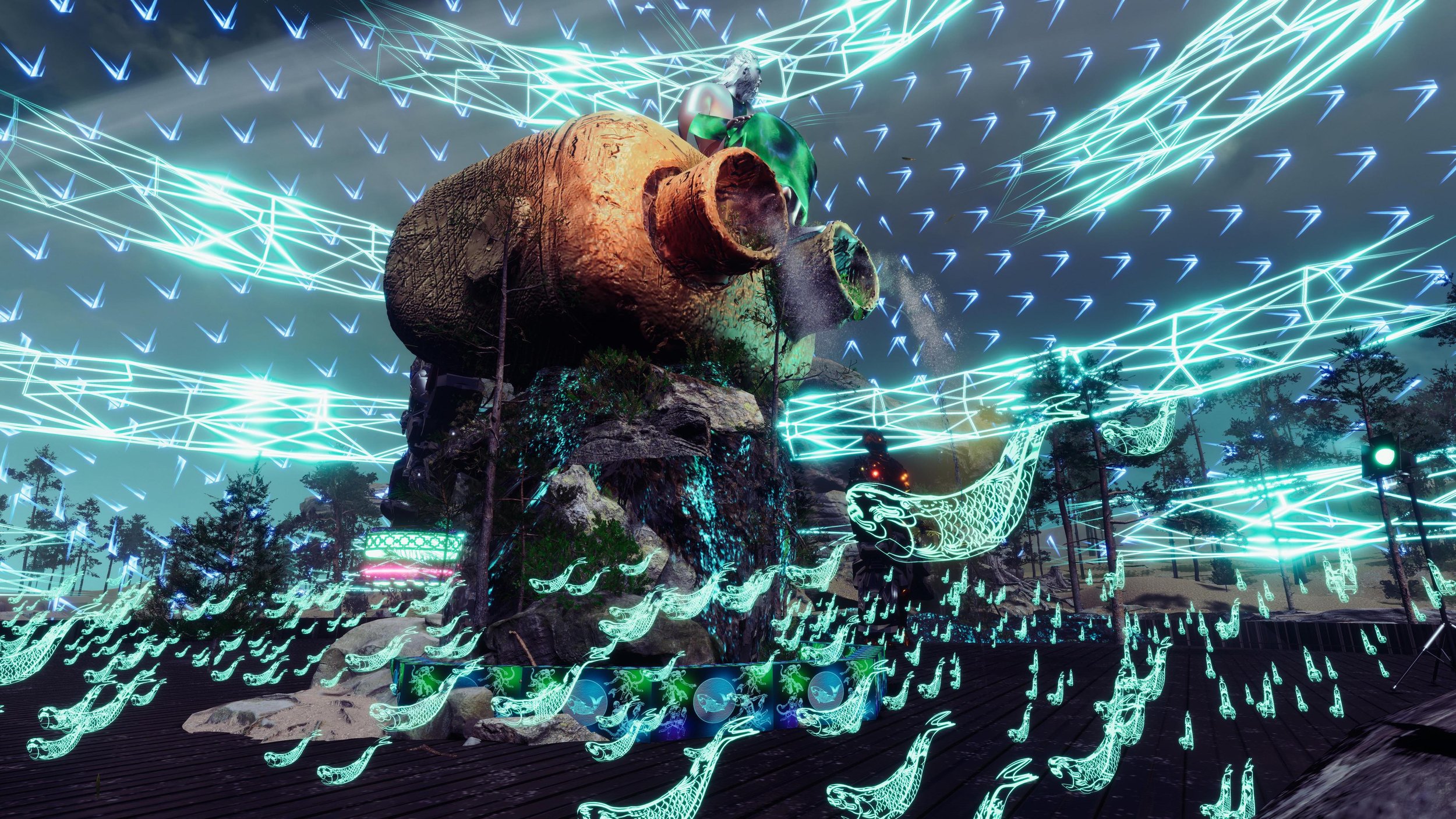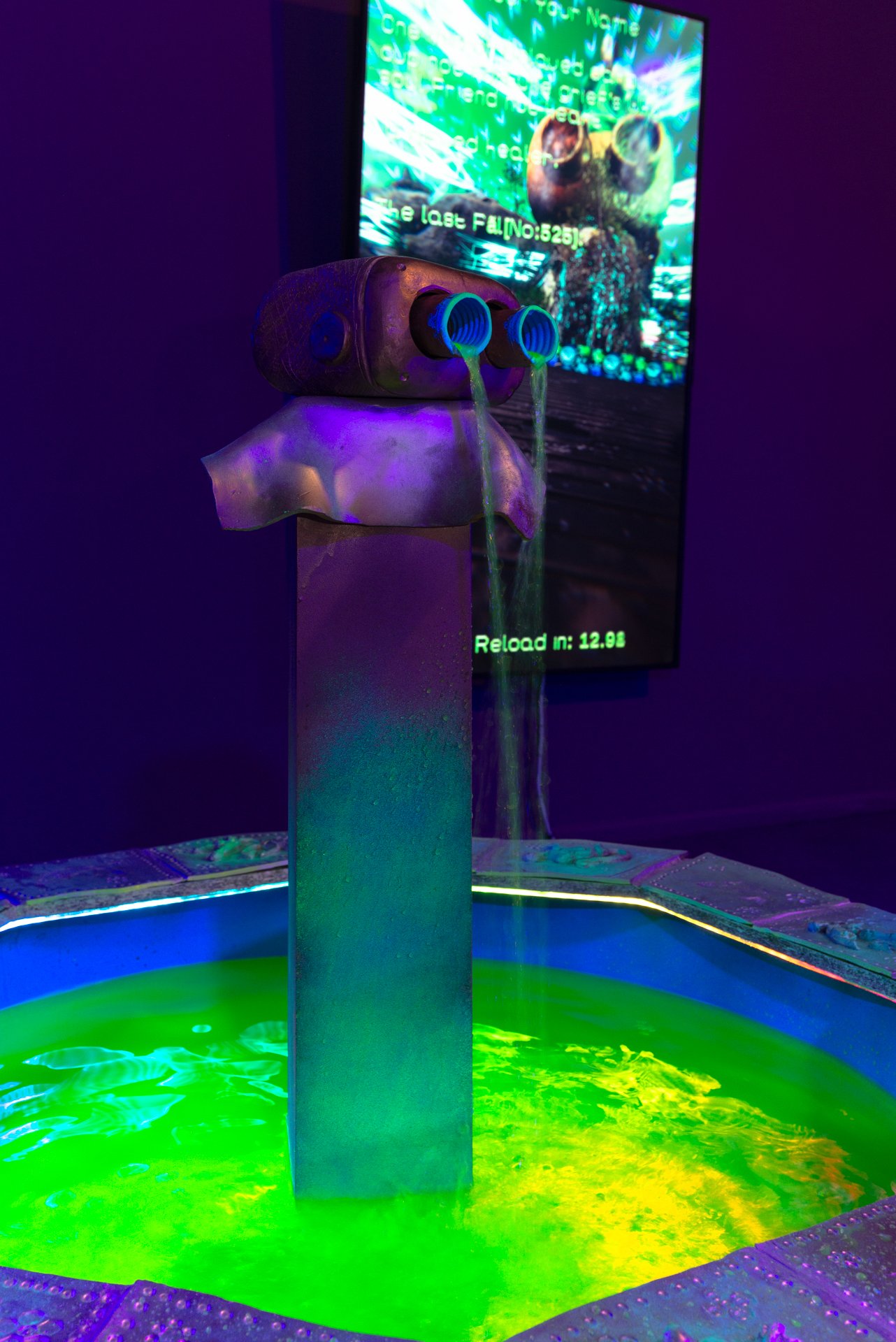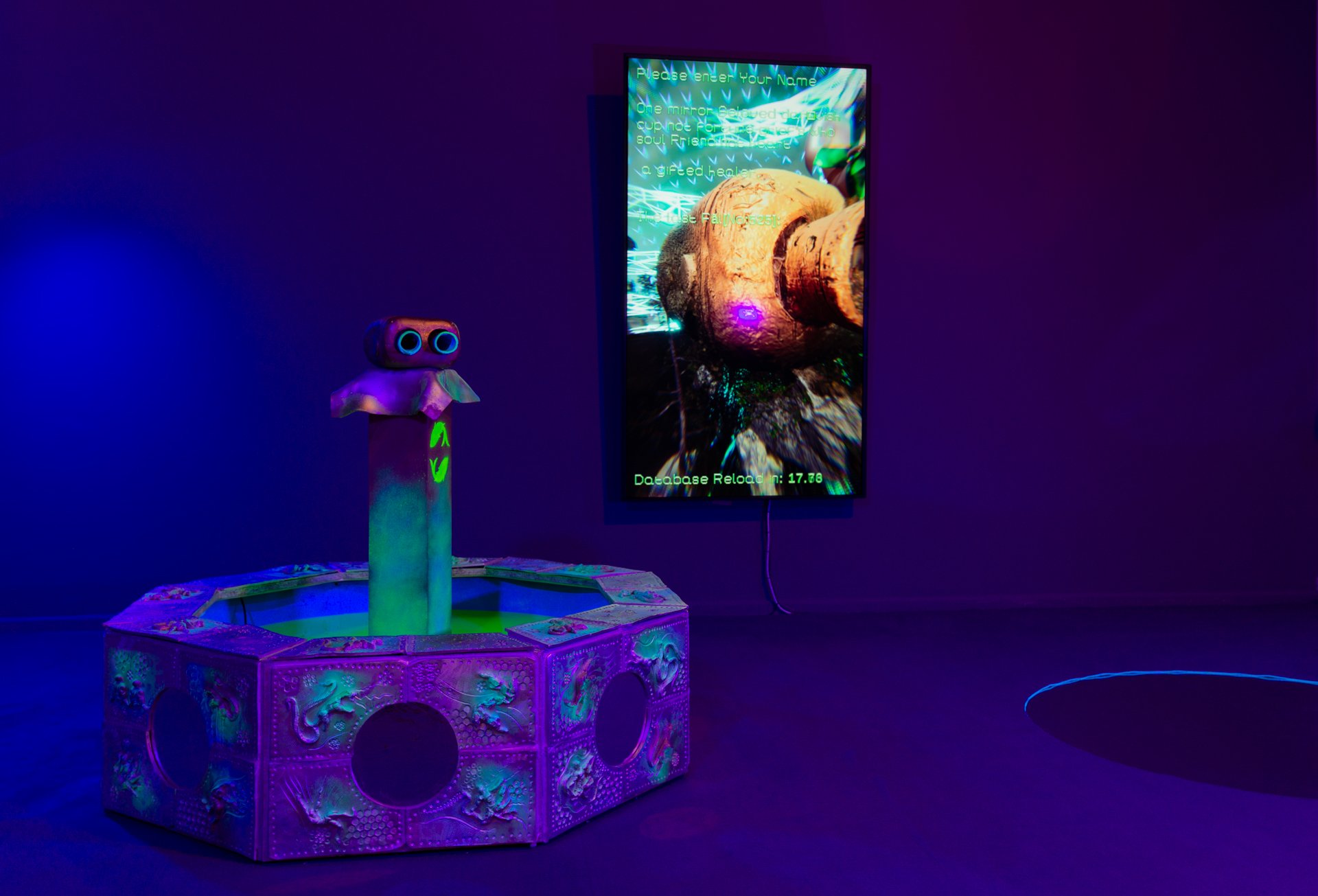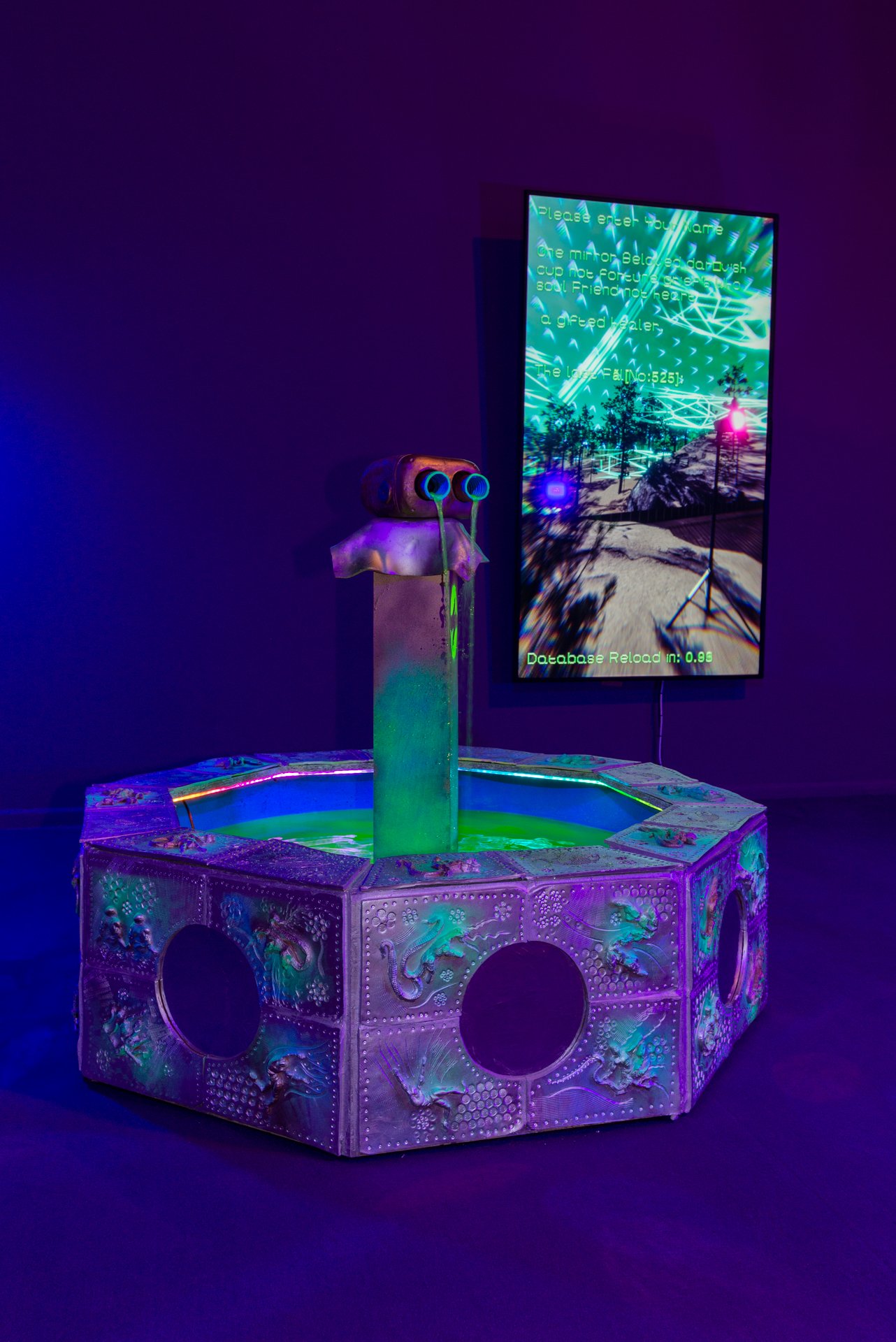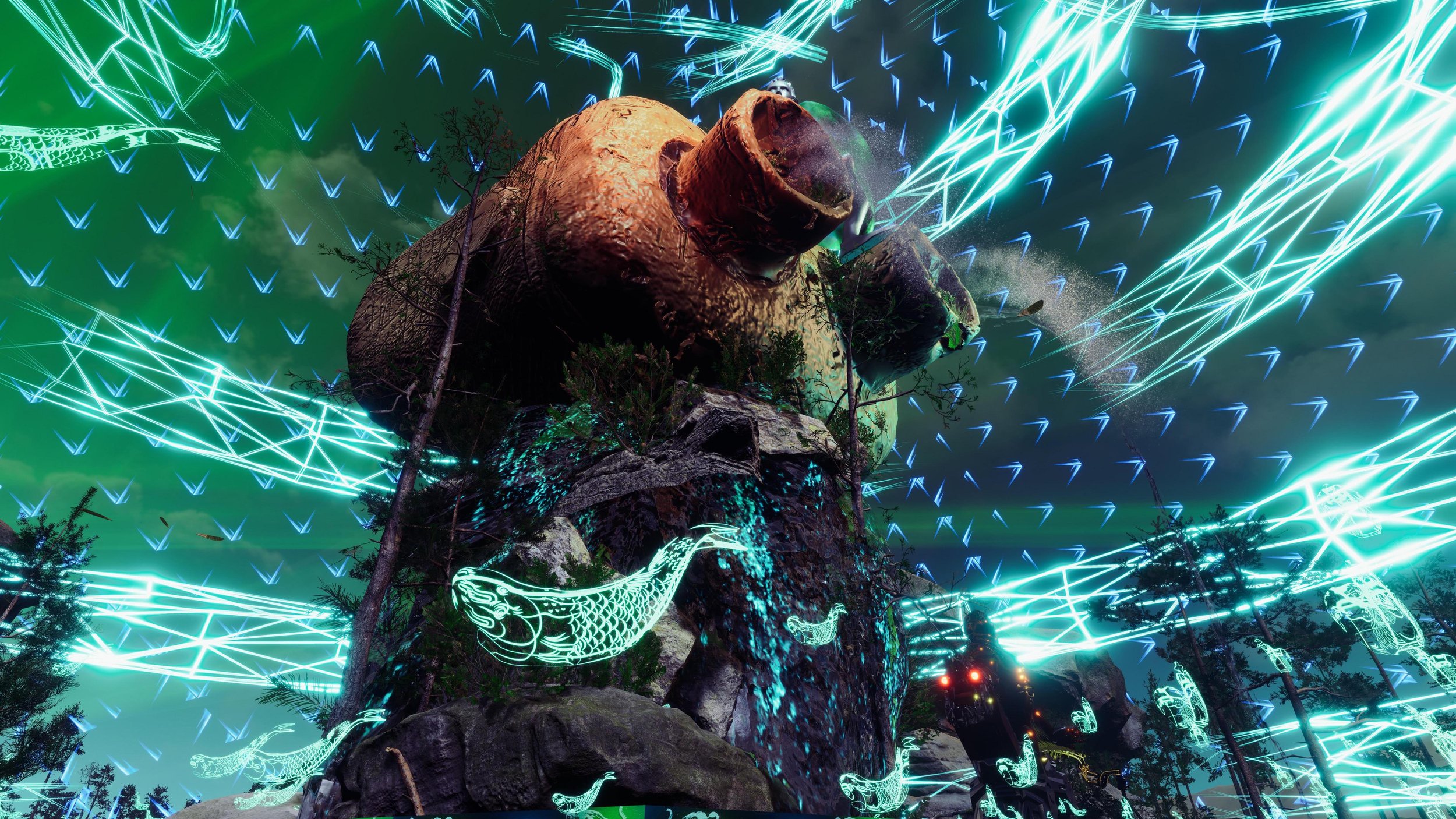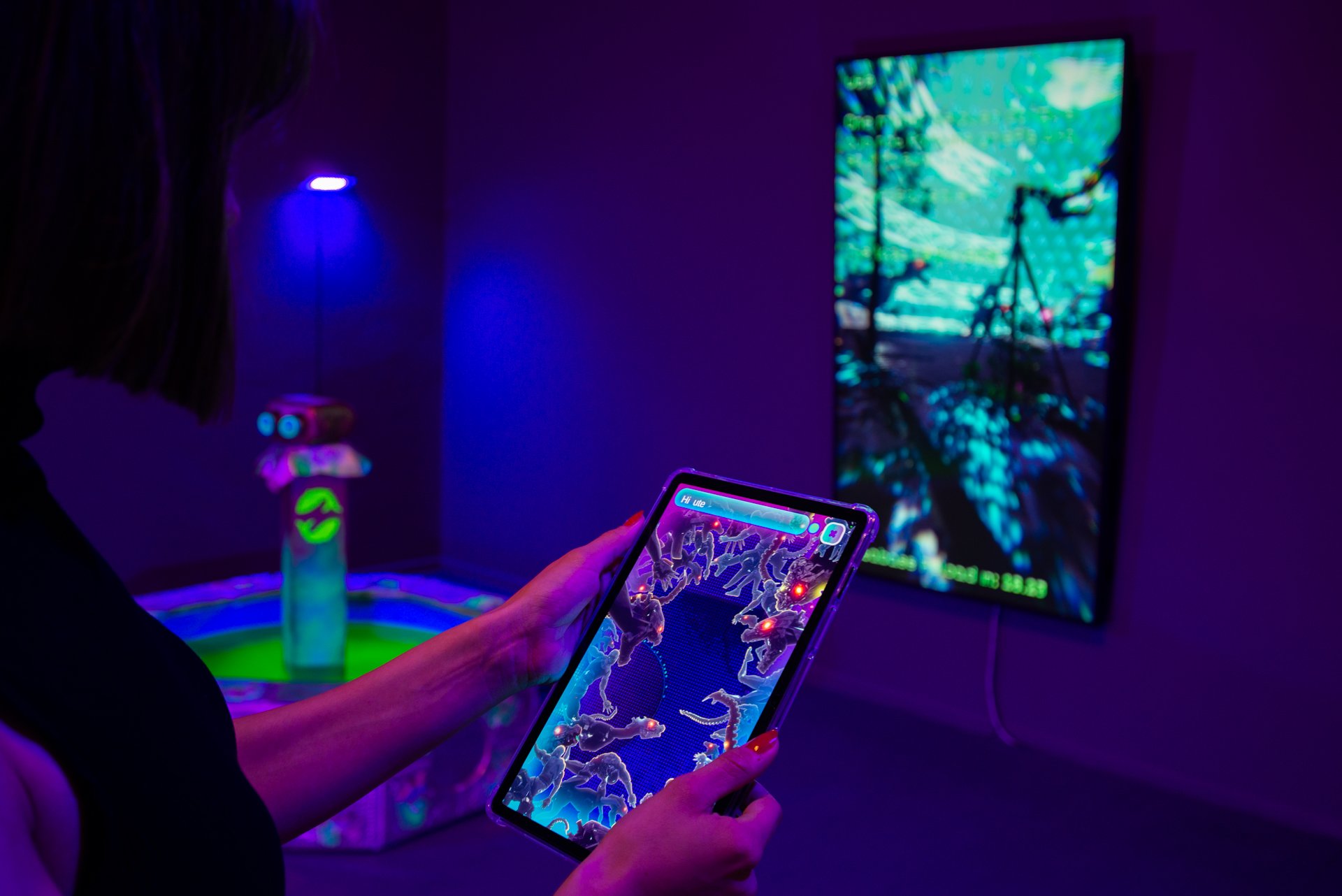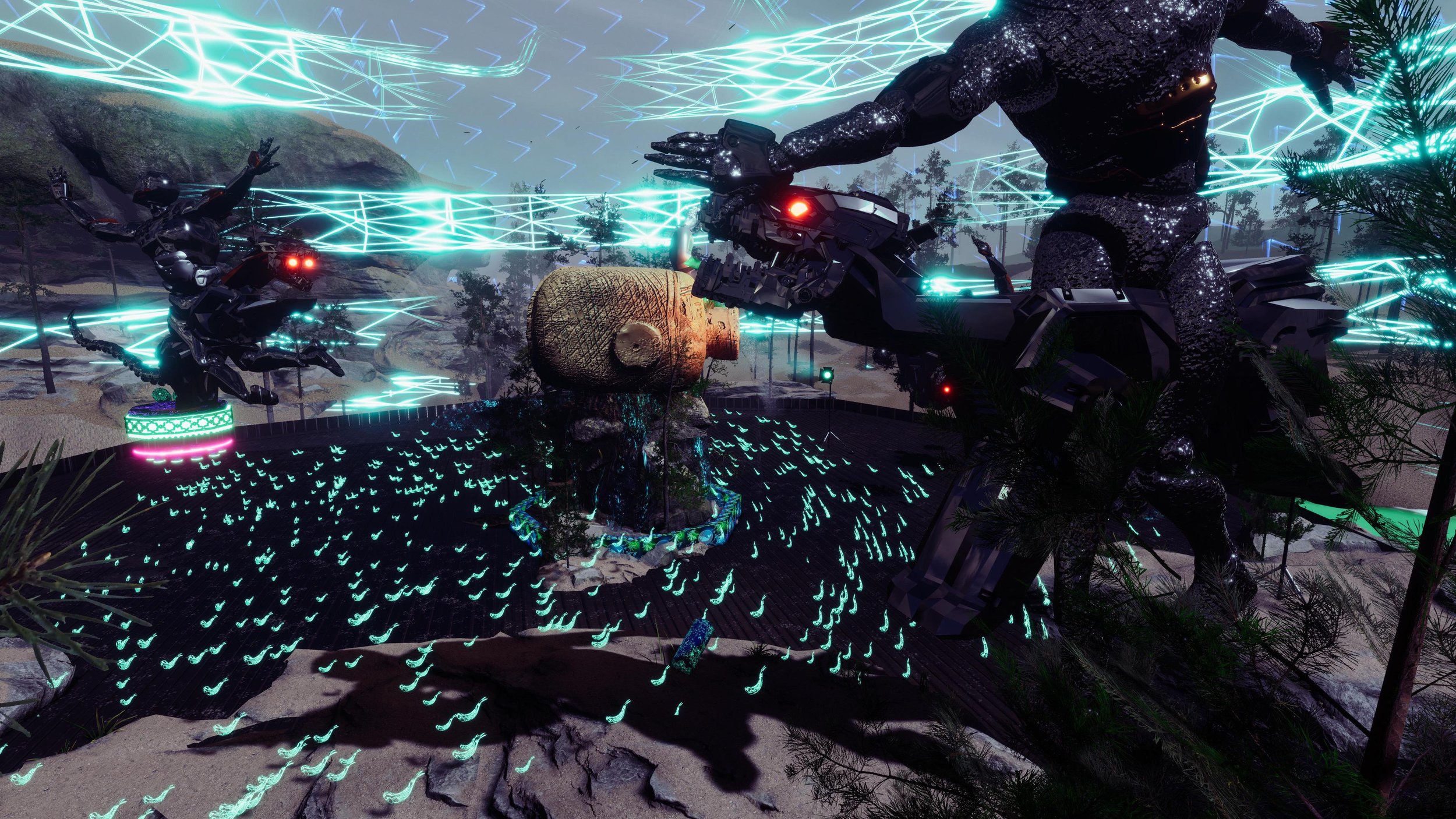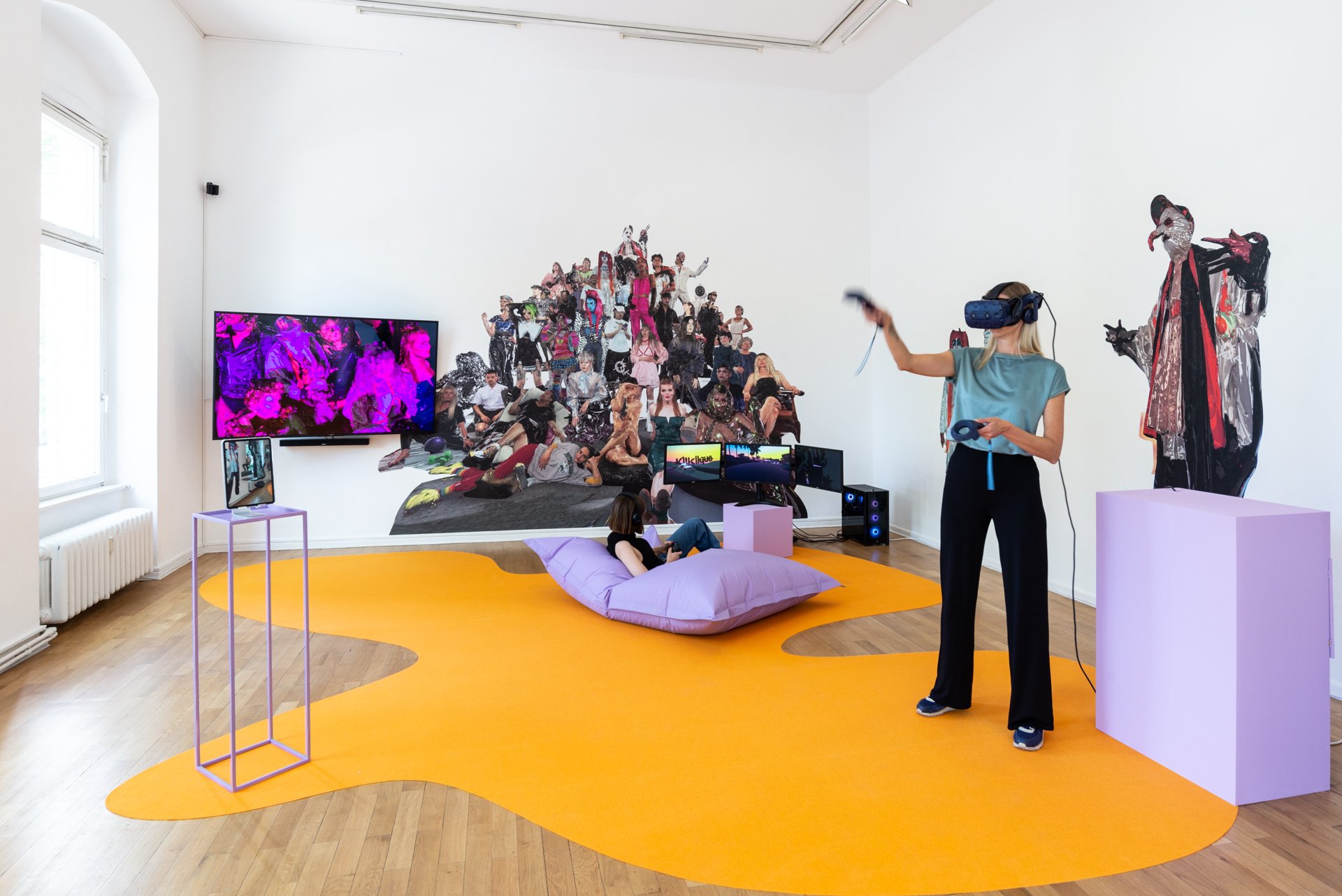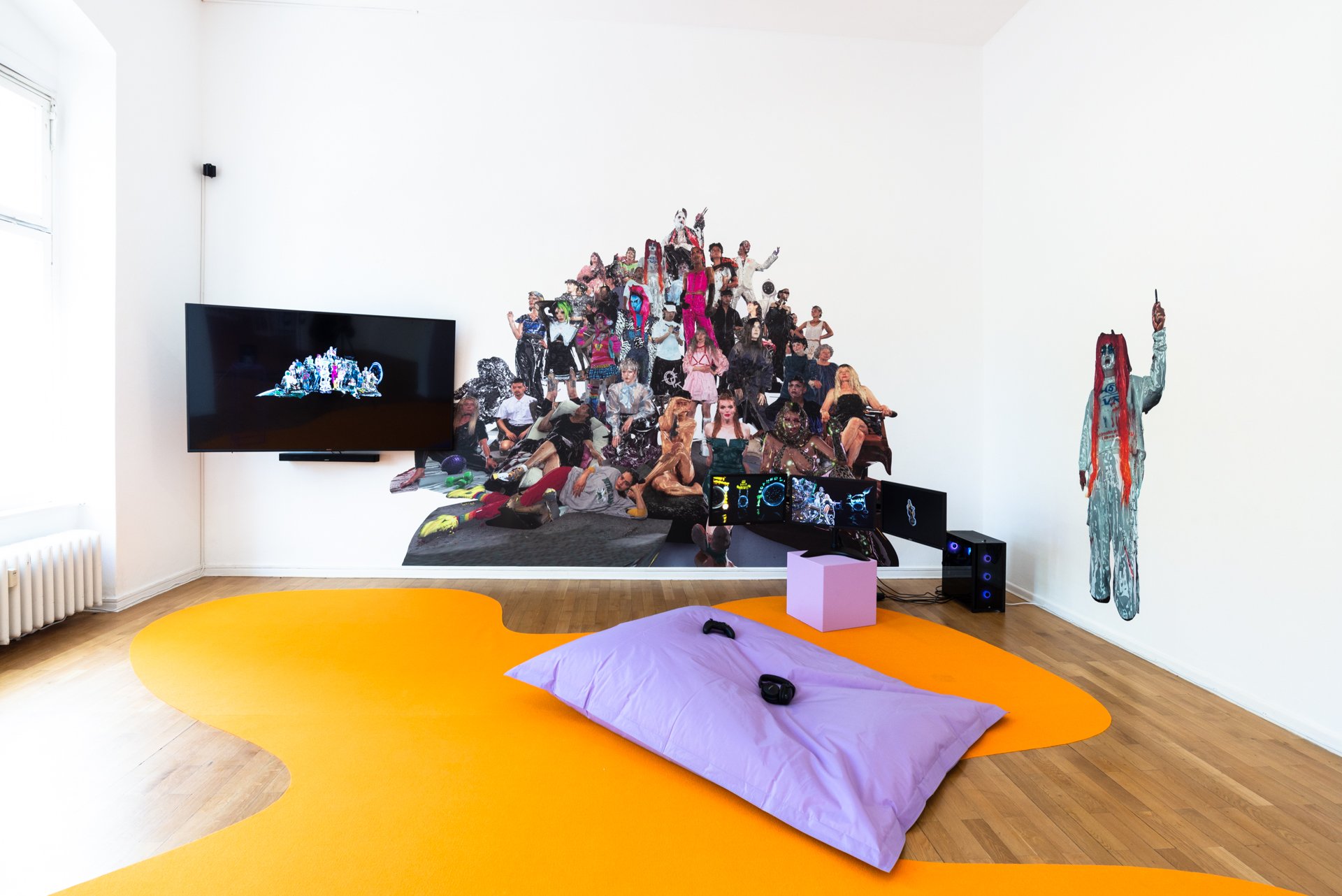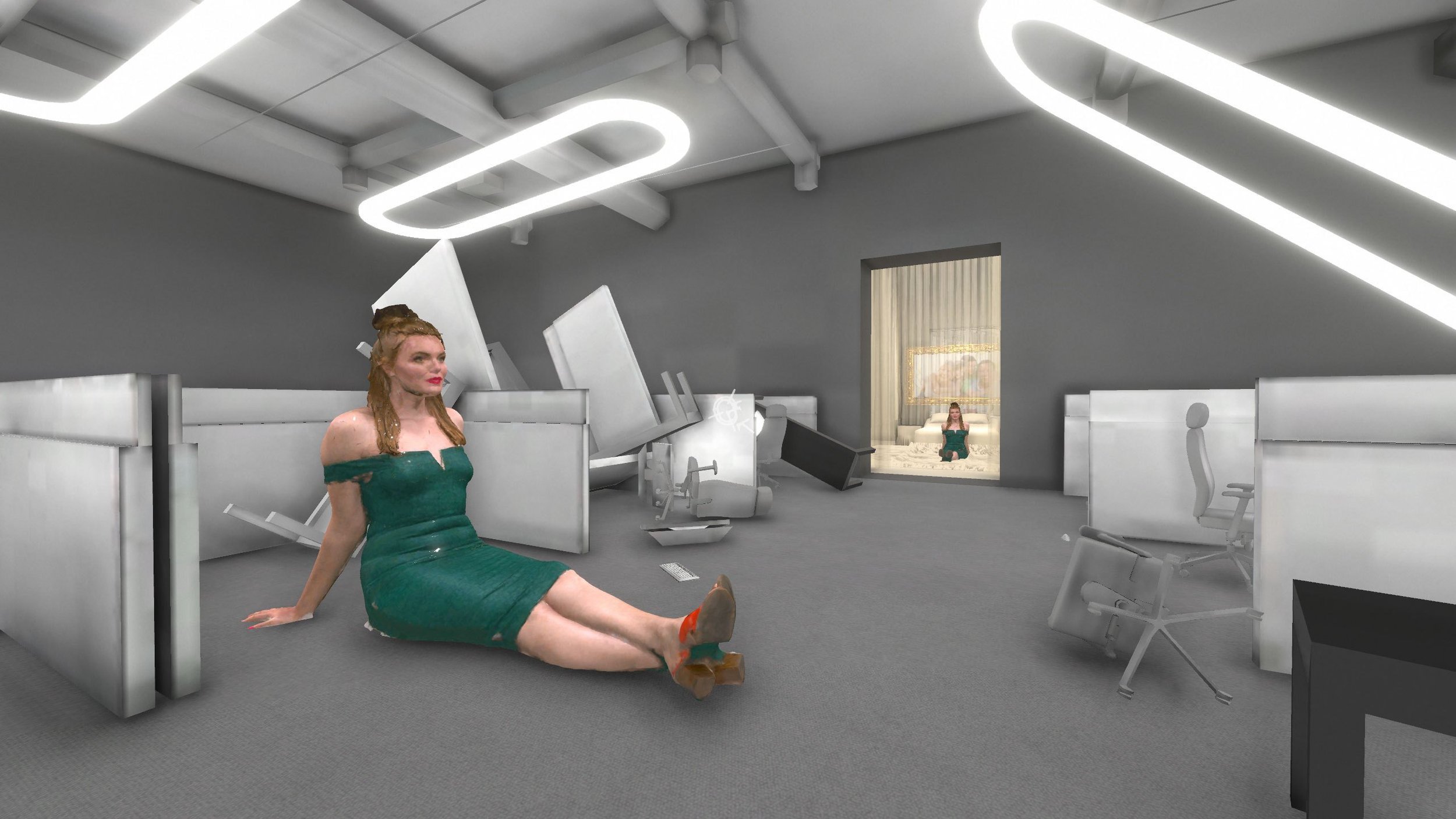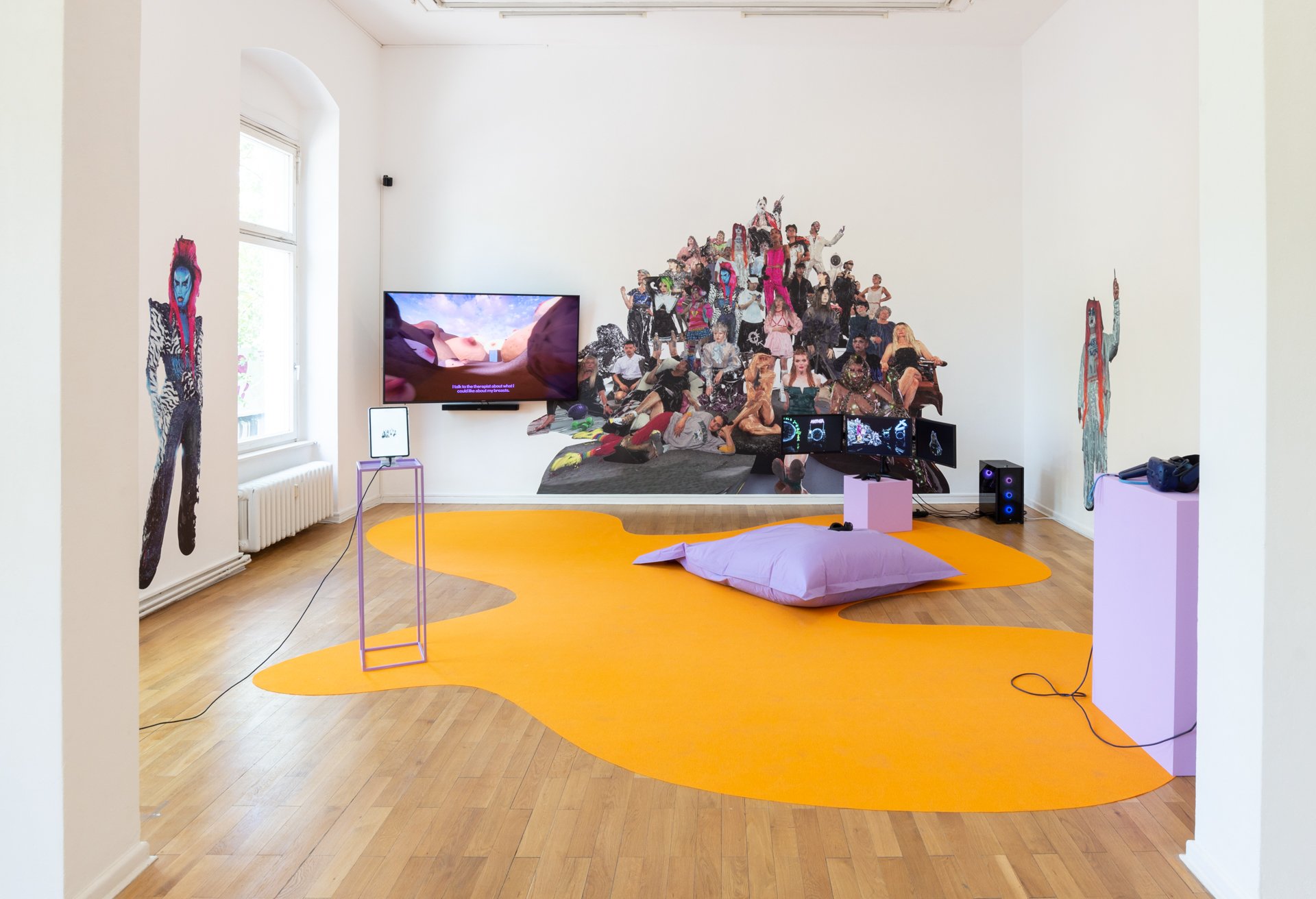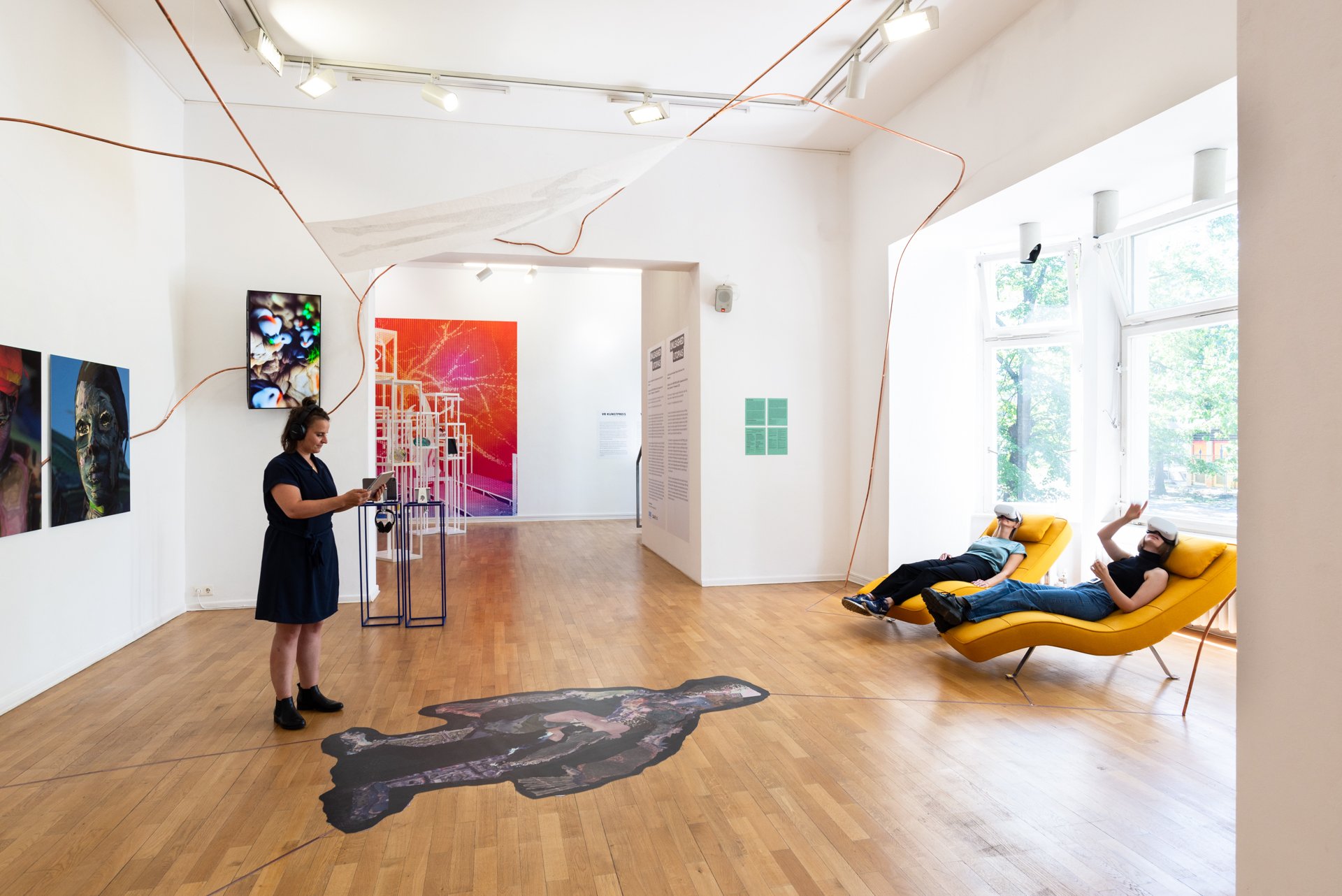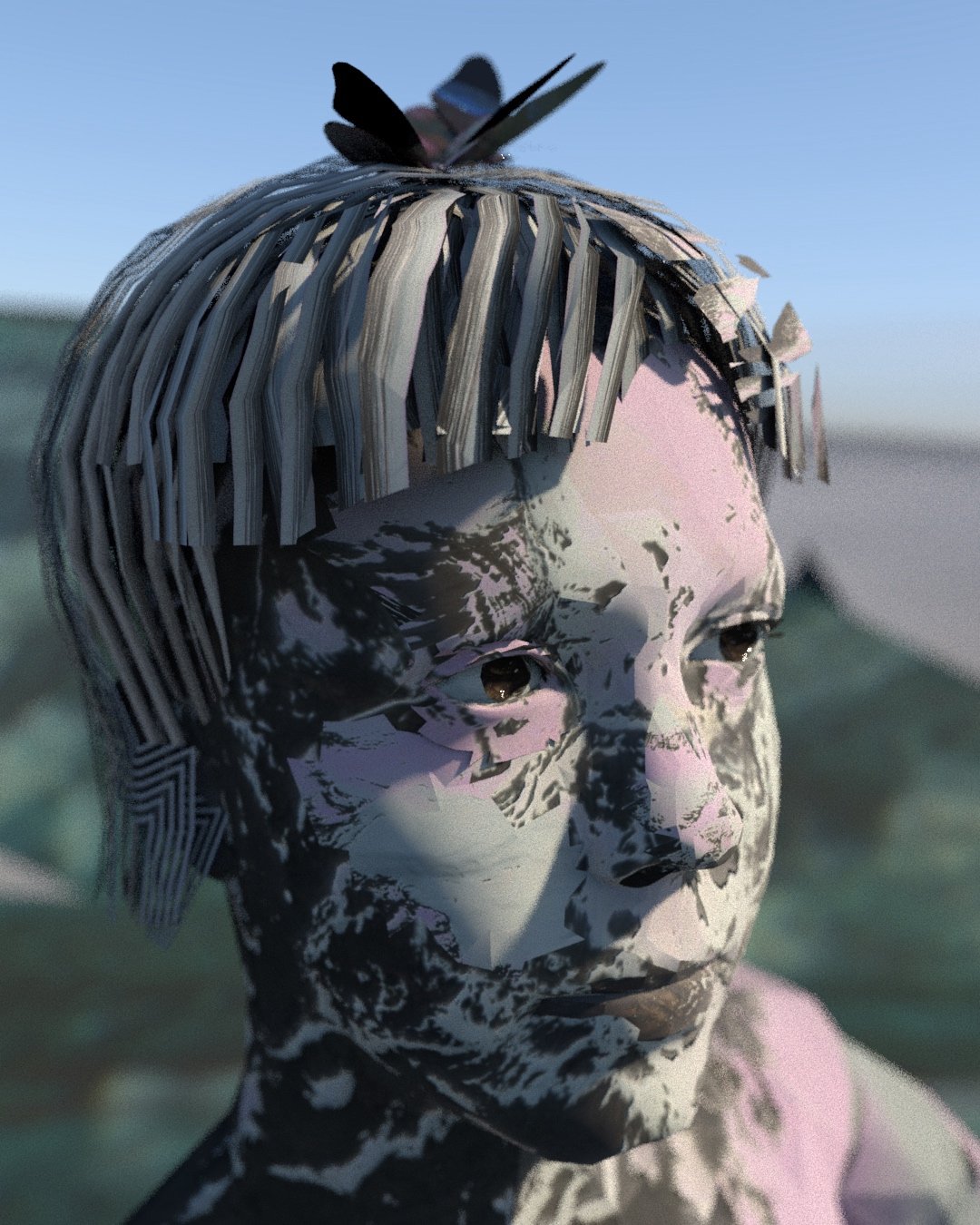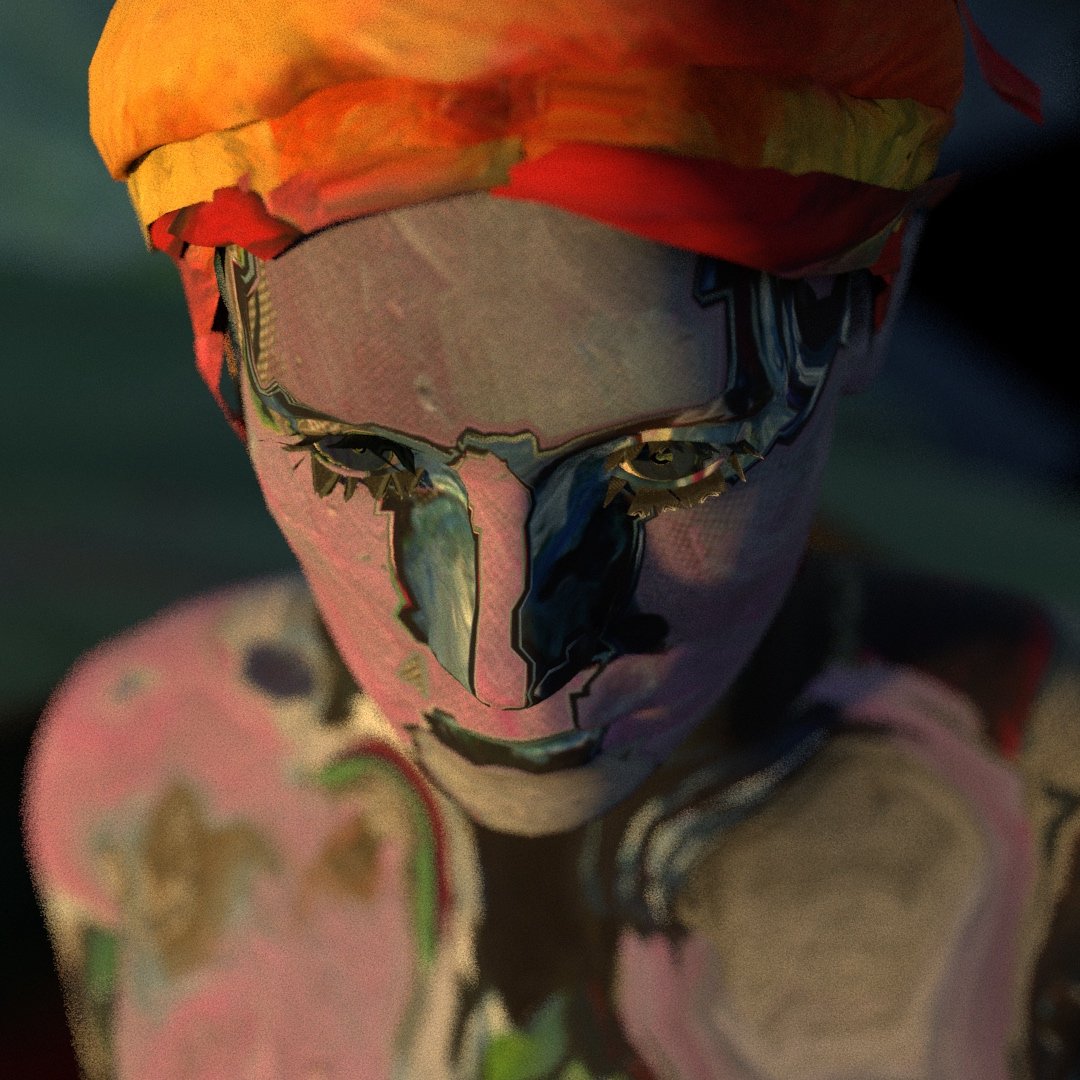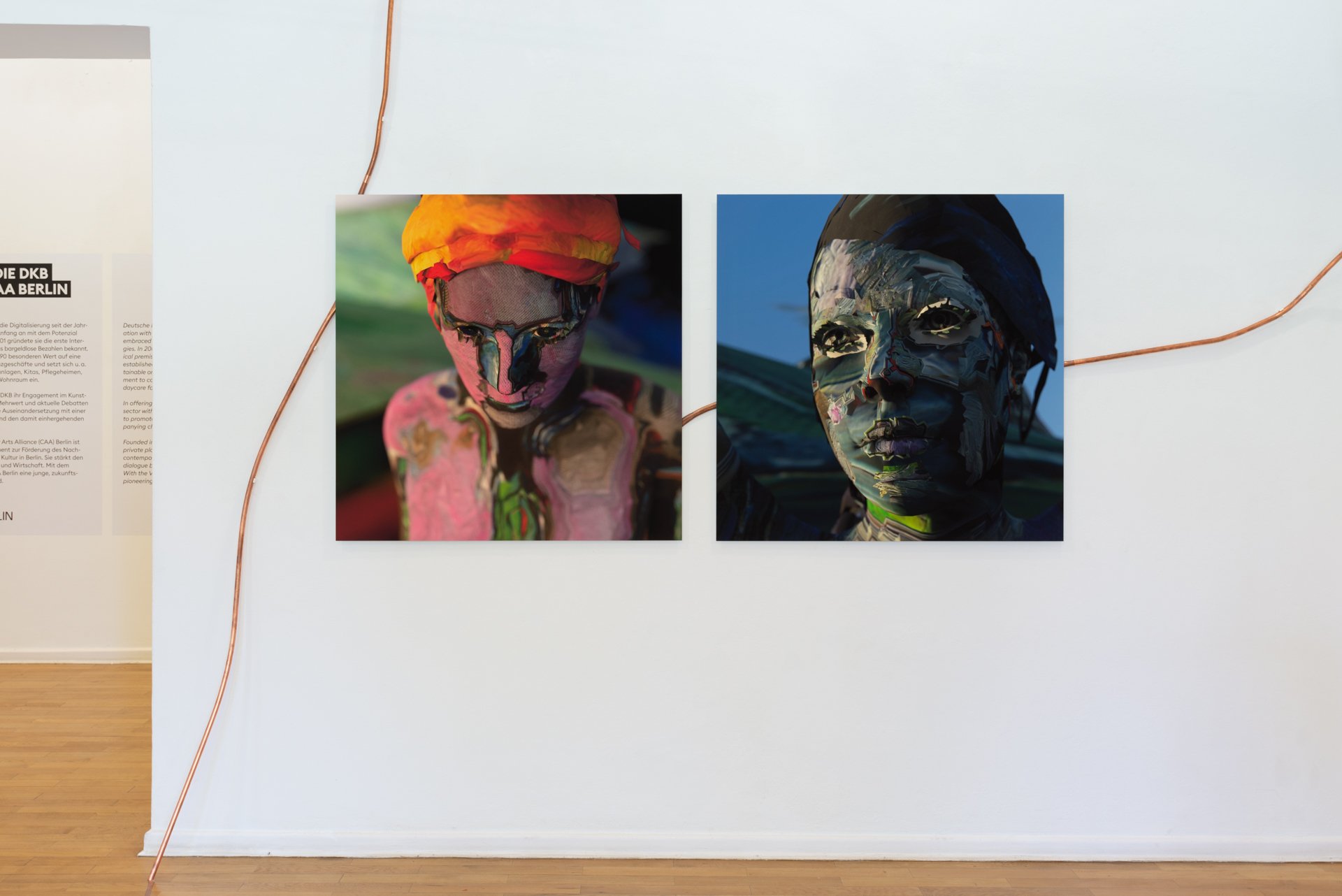UNLEASHED UTOPIAS
Artistic Speculations about Today and Tomorrow in the Metaverse
Exhibition of the VR ART PRIZE by DKB in Cooperation with CAA Berlin
Works by: Marlene Bart, Anan Fries, Mohsen Hazrati, Rebecca Merlic, Lauren Moffatt
Curated by Dr. Tina Sauerlaender
September 9 - November 5, 2023
Haus am Lützowplatz, Berlin
Watch the exhibition film by J. Pegman
The notion of a better world is closely tied to utopia as a theme. The term literally describes a wonderful place that does not exist. It means that the design for an ideal society is a criticism of the current situation. Utopias are based on questions such as: What happens if we change a couple of rules? How can we live well together? Thus, utopias also inherently have great potential for societal change and visions for a better future.
In this exhibition, the grant winners of the VR ART PRIZE of the DKB in Cooperation with CAA Berlin show how we might be able to deploy new technologies for a more just, multifaceted, and personal coexistence. They are alert to the changes in values and norms currently going on in society and link their speculations to topical debates. With the help of virtual reality and site-specific installations, the artists create accessible, immersive, experiential utopias. They critically speculate upon artificial intelligence, 3D scanning, animation techniques, research in scientific fields, or the metaverse.
Marlene Bart works with digitized natural history artifacts, bringing them to life in virtual worlds and producing a new perspective of our concept of nature. Anan Fries renounces the division between nature and technology to overcome the boundaries between biological genders, creating a world in which all bodies could be pregnant. Rebecca Merlic celebrates the liberation of binary identities, physical transformation, and the diversity of human individuality. Mohsen Hazrati combines figures from Iranian myths and soothsaying traditions with forms of artificial intelligence, altered by the artist to provide us with cryptic advice for our futures. Lauren Moffatt looks at the interior human, gathering data from it via artificial intelligence and combining it with painting to create a multilayered, intimate landscape.
The artists’ unleashed utopias rattle not only societal norms but also the purely profit-oriented use of new technologies. With their radical speculations, they open up new perspectives of our lives, our coexistence. Through their visions, they reinforce the values such as openness, diversity, and tolerance that should characterize our society now and in the future. And it is precisely in that where utopia lies.
Copyright of all pictures: J. Pegman and selected artists
Artist Talk with Marlene Bart (in German)
Marlene Bart, Theatrum Radix, 2022
About the work
Theatrum Radix combines systems of categorization used in natural history with contemporary technologies such as CT scans and 3D modeling. In the virtual space, natural objects are turned into new, surreal, moving pictures and supplemented by artworks. Viewers literally immerse themselves inside of bones, or a glass brain, or in the interior life of a dissected frog. Boundaries between the types of animals and plants are dissolved, creating a speculative outline dealing with habitats and systems of order. This allows viewers to change perspective. They find themselves at a remove from the human, anthropocentric perspective, and the systems it uses to categorize nature. The title can be traced back to a seventeenth-century Italian philosopher, Guilio Camillo, and his Theater of Memory. Camillo planned a theater in which he could unite knowledge of the world and of the universe, like an encyclopedia. Theatrum Radix picks up on this idea and creates a hybrid universe oscillating between the physical world and virtual space. It opens up a playful, interconnected view of objects, instead of reproducing order as a hierarchical concept.
About the artist
Marlene Bart works at the intersection of natural history, anatomy, and the visual arts. She combines scientific and artistic images to create a new visual language. To what extent does this common visual language make it possible to rethink systems of order in the natural sciences? Here, Bart’s research is also artistic—how can the human relationship to these categories be influenced and even altered by virtual reality, or VR. Using a variety of techniques (prints, artists’ books, sculptures, installations, VR), she shifts historical books and other evidence into a contemporary context. Marlene Bart studied the visual arts under Professor Wolfgang Ellenrieder at the Hochschule für Bildende Künste in Braunschweig (HBK), at Villa Arson (École nationale supérieure d‘art) in Nice and at the Art Center College of Design in Pasadena, California. She has a master’s degree in “Art in Context” from the University of the Arts Berlin (UdK) and completed her doctorate at the Bauhaus University in Weimar (BUW) on the subject of „The artist‘s book as a multimedia encyclopaedia“. Marlene Bart lives in Berlin.
Credits
Concept, Director, Script: Marlene Bart
Produced as a cooperation of Marlene Bart, Ikonospace founder Joris Demnard and 3D Artist Manuel Farre Music by Daniel Benyamin
Artist Talk with Anan Fries
Anan Fries, [POSTHUMAN WOMBS], 2022
About the work
[Posthuman Wombs] is a gentle journey into an immersive landscape inhabited by pregnant people, called “posthumans.” Nature and technology are not opposites here but directly linked to each other. [Posthuman Wombs] is Anan Fries’s exploration of a non-binary pregnancy and the desire to find community in otherness. The “posthumans” living in the landscape are virtual versions of people who are connected to the theme of pregnancy through either art or activism. They have been 3D scanned and digitally impregnated. The work questions common norms and role models, speculating about a possible future in which pregnancy is a technological hack that can be applied to all bodies. Here, in this fictional, speculative world, bodies and gender are not binary but manifold. The piece creates a new perspective on pregnancy in our society, above all, taking into consideration the possibilities for a freer and more equal way of living.
About the artist
Anan Fries is a digital and performing artist. They are the former artistic director of the game-theater collective machina eX, which is known for its immersive, gamified experiences. In addition, Anan Fries is a co-founder of Henrike Iglesias, an experimental performance collective with a strong love for pop and politics. Anan explores correlations between technology and what we regard as “nature” and “natural.” They are interested in the question of how technologies can be used to make queer perspectives accessible. Fries’s works are conceived at the intersection between digital and performing arts. In 2021, in cooperation with the sound artist Malu Peeters, Fries created VIRTUAL WOMBS, a hybrid of a VR experience and live performance, and in 2022 [POSTHUMAN WOMBS], a VR essay that has been shown at the IDFA DocLab in Amsterdam, DOK Leipzig, GIFF Geneva, Konsthall C in Stockholm, and elsewhere.
Credits
Creator, Director, Script: Anan Fries
Creator, Composition, Sound Design: Malu Peeters
Creative Technologist, VR & AR Developer: Ambrus Ivanyos
Posthumans: Brandy Butler, Anan Fries, Olivia Hyunsin Kim, Ncube as Bibi, Fercha Pombo, Kübra Uzun, Wheelymum
Installation: Anan Fries
Artist Talk with Mohsen Hazrati
Mohsen Hazrati, FÃL PROJECT [NONE-AI], 2023
About the work
Mohsen Hazrati works with bibliomancy, a process that employs books to foretell the future. In this case, he uses a volume of poetry called The Divan by the Persian poet Hafez, who lived in Shiraz in the fourteenth century. Words from a randomly selected poem by Hafez are used to create an artificial intelligence (AI) algorithm which then generates a collection of data made up of random texts which can be found on the internet. With this data, users can obtain their own individual divinations based on a random AI principle, then interpret the results to predict their own futures. The artist uses AI as a means of divination, transferring centuries-old literature and culture to the digital world. In the process, he attempts to keep his own influence as minimal as possible. In accordance with Iranian tradition, where a budgerigar bird usually selects the verse, the human being recedes into the background here, too. Divination is given space to reveal itself without any human influence. The word „none“ means “without intelligence” in Farsi. In contrast to the commercial usages of AI, the goal here is to create a type of AI that does not work logically, but rather as if it was “drunk,” to enable spiritual divination that is not controlled by humans.
About the artist
Works by the artist Mohsen Hazrati deal with the process of linking traditional literature with digital technologies. After majoring in graphic design, with a minor in new media and digital art, Mohsen Hazrati graduated from the Shiraz Art Institute of Higher Education in 2012. His art has been seen at a variety of conferences—for example, at the University of the Arts Berlin, the Staatliche Akademie der Bildenden Künste (State Academy of Fine Arts) in Stuttgart, the IAM weekend Barcelona, EVA, the Multimedia Anthropology Lab at University College London; the Electronic Literature Organization Conference at the University of Central Florida, TEDxMollaSadraSt (Shiraz, Iran), and at exhibitions in the Grafikenshus Museum, peer to space, Radiance VR, Synthesis, Triennale Fellbach, and the Transfer Gallery. With Milad Forouzande, Hazrati cofounded the Dar-Al-Hokoomeh Project (a new media art project) which he has been curating since 2013 in Shiraz, Iran. The artist lives and works in Berlin.
Credits
Concept & Programming: Mohsen Hazrati
Character Sculptor: Soroush Pouyan
Rebecca Merlic, GLITCHBODIES, 2022-ongoing
About the work
GLITCHBODIES is an interactive computer game as well as an immersive experience in virtual reality (VR). Here, Merlic draws on the structures of video games, a widespread form of digital entertainment. The artist does research into new forms of feminism, LGBTQ+, and drag communities. Using 3D scans, she makes digital avatars off of real people, which are then embedded into virtual landscapes. She creates intimate and sensitive images of different individuals, and taken together, they give rise to a diverse society in virtual space. Individual identities become a collective body, a network, which turns the avatars into politically charged bodies. They are contrasts to the heteronormative and binary avatars that are usually encountered in classic video games. Instead, GLITCHBODIES takes us on a journey through realities of people who share the notion of “queer” as a political attitude.
About the artist
Rebecca Merlic is an artist, an architect, an experimental filmmaker. In her work, she examines alternative forms of society and considers how social and economic conventions can be changed. Using digital technologies such as 3D scans, she creates new ways to depict diverse identities in a virtual society. She is the winner of the 2020 Marianne von Willemer Prize for Digital Media. Currently, she is a transdisciplinary participant in the European Alliance of Academies: Ignorance is Strength AIR program, in collaboration with the Akademie der Künste (Academy of Art), Berlin and the HDLU (Croatian Association of Artists), Zagreb. Additionally, she is working on the project DigitalHumanism x FutureLiving in collaboration with the Austrian Cultural Forum in Tokyo.
Credits
Director/ Artist Lead/ Unity: Rebecca Merlic
Unity programming: Vivien Schreiber, Anna Rüth (VR)
Sound design: Manuel Riegler
Script/Worldbuilding: Glitchbodies Protagonists and Rebecca Merlic
Lauren Moffatt, Local Binaries
VR Version (2023), AR Version (2021)
About the work
“Everyone you meet carries a world inside themselves. What does yours look like?” The artist Lauren Moffatt posed this question to nine women around the world. With the help of therapeutic mindfulness techniques (such as body mapping, for instance), the participants concentrated on their internal state, describing it as a landscape. They imagined geological shapes, sounds, plants, weather systems, and architecture in order to express their inner state. Afterward, they then relayed their scenes to the artist. Moffatt recreated the elements of each report and worked with artificial intelligence (AI) to visualize every single detail described. She then painted the images produced by AI by hand, scanned them, and finally modeled and animated them in 3D. Working with software normally used to make computer games, she creates a vast, virtual universe. In it she weaves and collages together the individual stories, allowing users to interact with them. Local Binaries collaborates with digital technologies in order to create a collective and intimate place that is deliberately decelerated and decentralized. Moffatt’s world offers an alternative to the metaverse visions of the tech giants.
About the artist
Lauren Moffatt makes immersive environments using experimental approaches and narrative structures. She investigates the connections between physical and virtual spaces and bodies. Here, she is especially interested in the blurred boundary between digital and organic life. The artist works with a mix of traditional, obsolete, and pioneering technologies. These combinations lead to speculative fictions whose origins can often be found under real circumstances. Lauren Moffatt studied painting, the theory and practice of new media art, and audiovisual art at the College of Fine Arts (AU), the Université Paris VIII (FR) and at Le Fresnoy Studio National des Arts Contemporains (FR). In 2022 Moffatt was honored by the Certamen Internacional de Arte Digital (ES) and is the recipient of the Revista MAKMA Prize (ES); in 2021 she was awarded first prize at the first VR ART PRIZE of the DKB in cooperation mit CAA Berlin (DE). She divides her time between Berlin and Valencia.
Credits
Artist, Director & Unity Lead (AR): Lauren Moffatt
VR Adaptation Lead: Nico Nonne Interaction Programming: Mohsen Hazrati 3D assistant: Marion Serclérat
Sound Consultant: Mads Michelsen
Script/Worldbuilding: Banafshe Hejazi, Bay Backner, bunnybreaker, Emma Shapiro, Tina McCallan (pseudonyms) Gloria Gallina, Alba Martinez, Brenda Collins, Ingrid Haididi, Polly Santori
A project of Stiftung Kunstfonds and Risk Change: MMSU Rijeka Developed with the support of CPH: LAB
